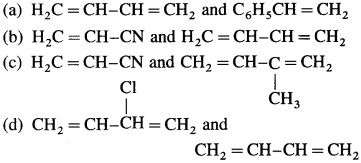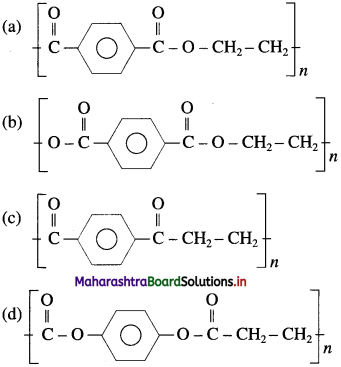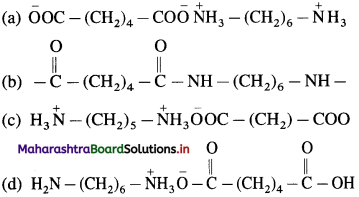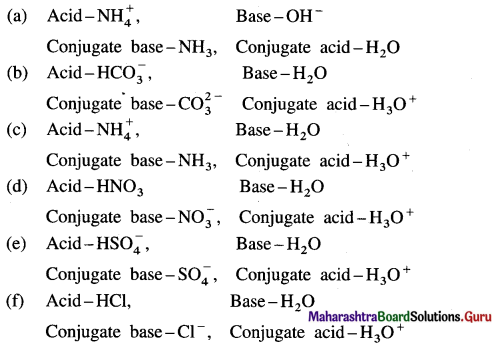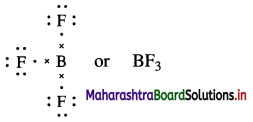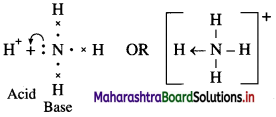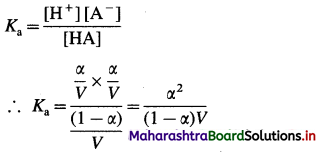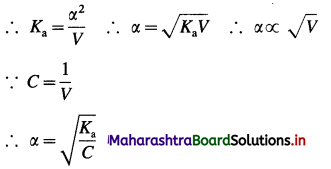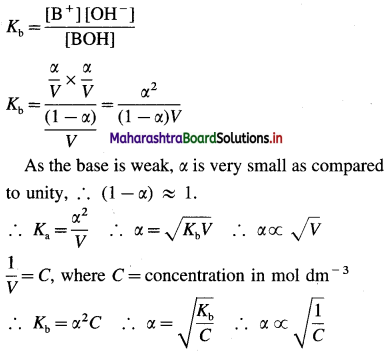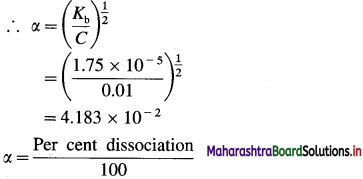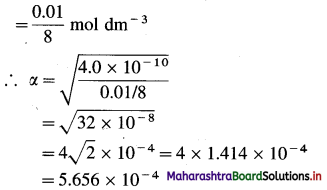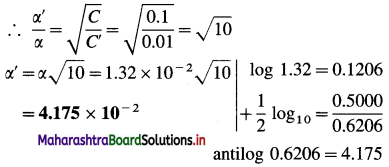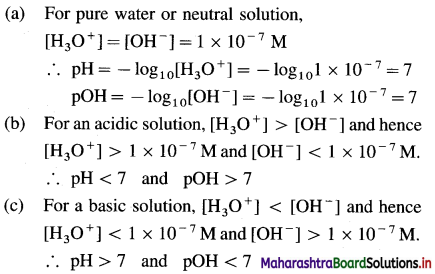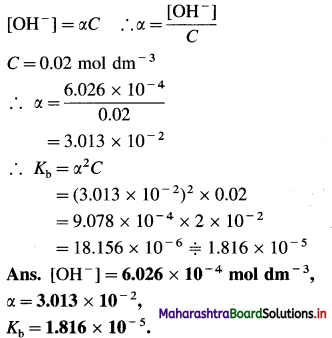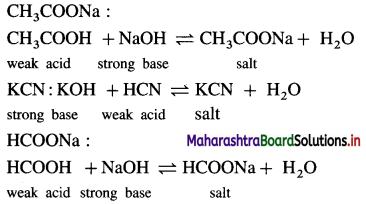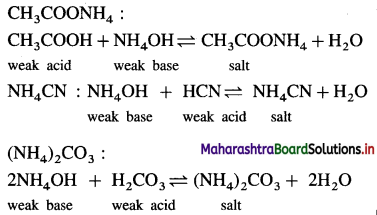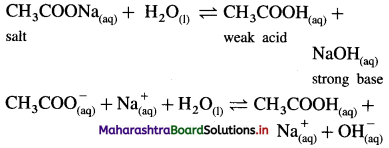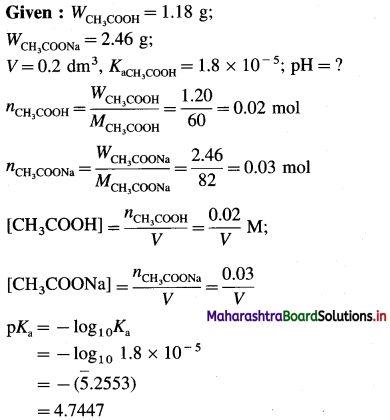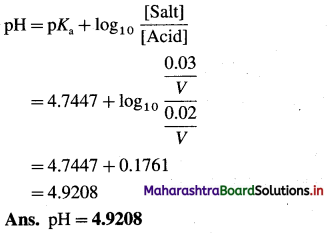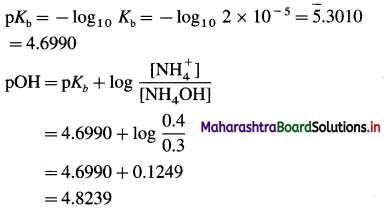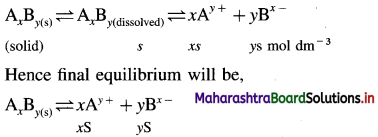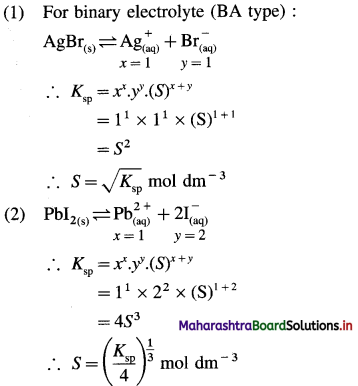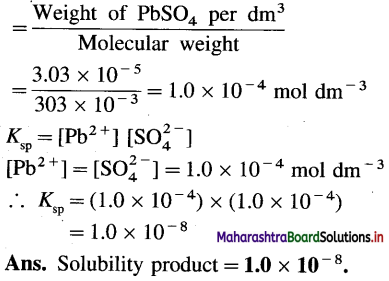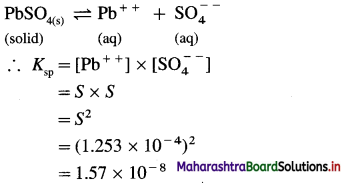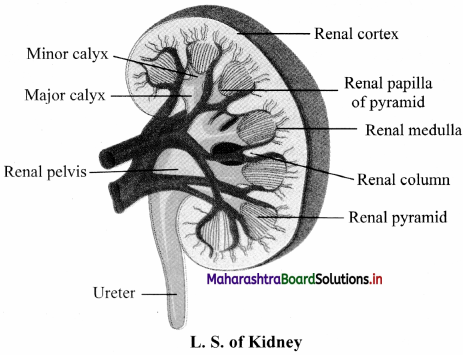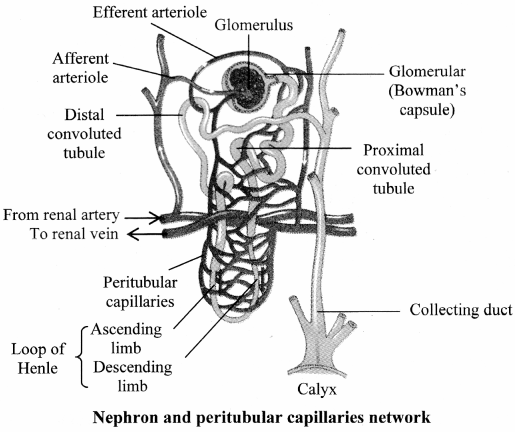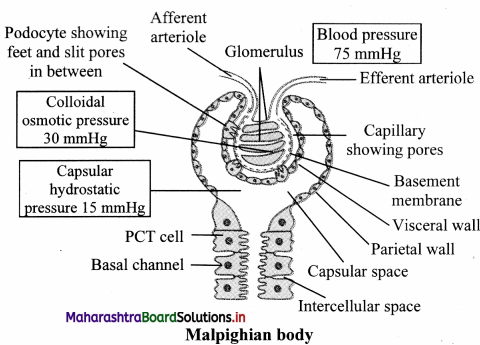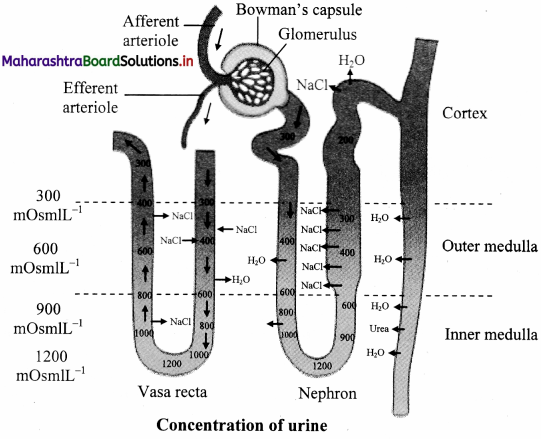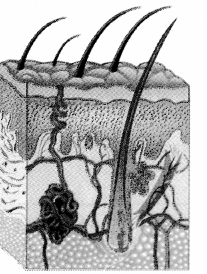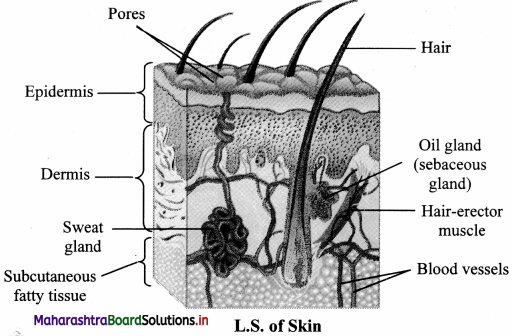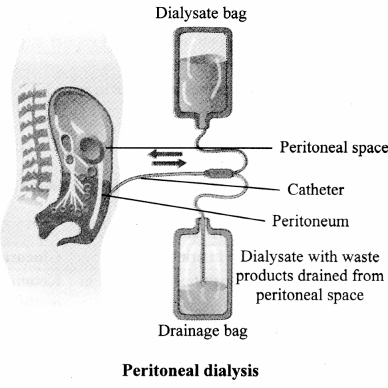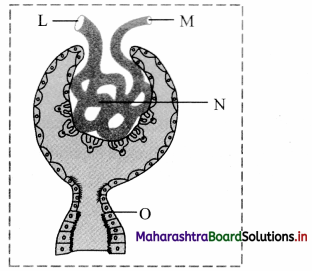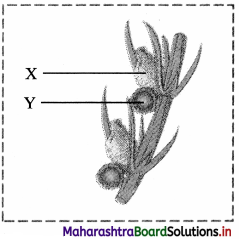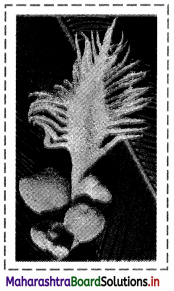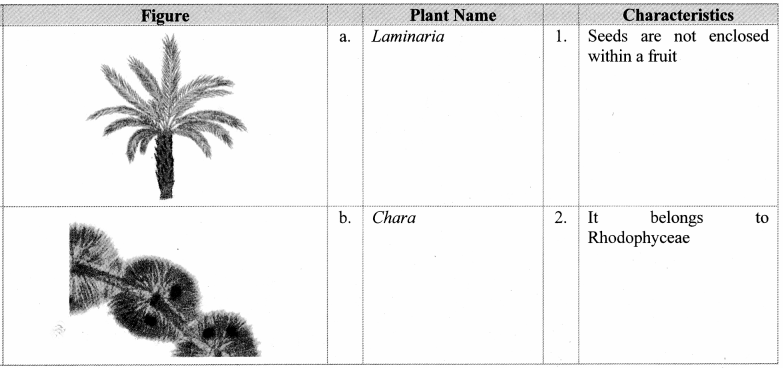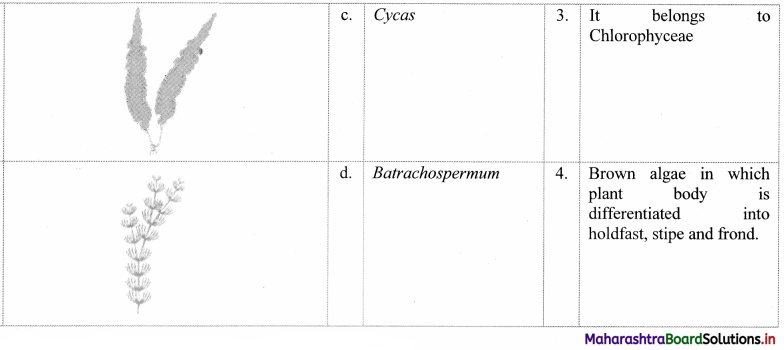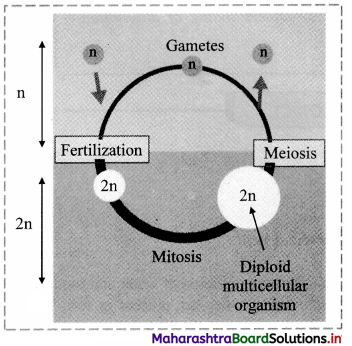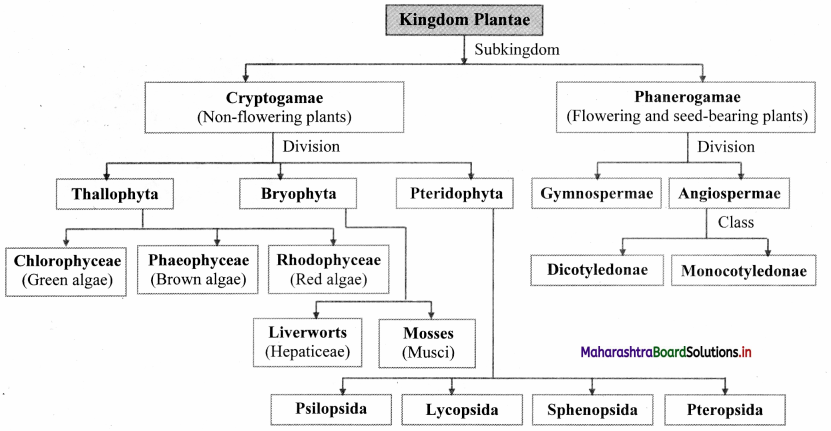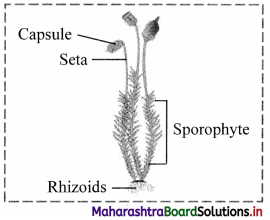Balbharti Maharashtra State Board 11th Biology Important Questions Chapter 4 Kingdom Animalia Important Questions and Answers.
Maharashtra State Board 11th Biology Important Questions Chapter 4 Kingdom Animalia
Question 1.
What are grades of organization in animals?
Answer:
Cellular, cell- tissue, tissue-organ are the grades of organization in animals.
![]()
Question 2.
How are the animals classified based on body cavity?
Answer:
The animals are classified as acoelomates, pseudocoelomates, and coelomates based on body cavity.
Question 3.
Explain in detail the body plan in animals.
Answer:
Animals show three fundamental body plans as follows:
1. Cell aggregate body plan.
2. Blind sac body plan,
3. Tube within tube body plan.
1. Cell aggregate body plan:
a. In this body plan, cells do not form tissues or organs.
b. Differentiation and division of labour among the cells is minimal.
c. Members of phylum Porifera show cell aggregate body plan.
2. Blind sac body plan:
a. In this body plan, the body is sac-like with a single opening. Digestion is carried out in this sac-like structure.
b. The food is ingested and egested through the same
opening.
c. Members of phylum Cnidaria show a blind sac body plan.
3. Tube within tube body plan:
a. Digestive system is present in tube-like body cavity.
b. Mouth and anus are present at two separate ends of the digestive system.
c. Phylum Annelida onwards all phyla show tube within tube body plan.
![]()
Question 4.
Give the characteristic features of phylum Porifera.
Answer:
Phylum Porifera (Pori = Pores: feron = bearing): Members of the phylum Porifera are also called sponges. Characteristic features of the phylum:
- Habitat: They are aquatic, mostly marine but few species are found in fresh water.
- Forms: They are sedentary animals (attached to substratum or rock).
- Body shape: They have asymmetrical body. Body of these animals consists of many cells with minimal
division of labour among cells. Hence, their body is considered as a colony of different types of cells. - Body surface: Their body bears minute pores called ‘ostia’ through which water enters the spongocoel (body cavity). Water leaves the body through a large opening called ‘osculum’. Beating of flagella creates water current.
- Circulation: Water is circulated in the body through the ‘canal system’. When the water enters the body of poriferans, cells absorb the food, exchange respiratory gases and release excretory products.
- Digestive system: The body cavity of sponges (spongocoel) is lined by unique type of flagellated cells called choanocytes or collar cells for digestion.
- Endoskeleton: The body of sponges consists of calcareous / siliceous spicules and proteinaceous ‘spongin fibres’.
- Reproduction: Sponges reproduce asexually as well as sexually. Asexual reproduction takes place by fragmentation and gemmule formation. Sexual reproduction is by formation of gametes. Fertilization is internal and development is indirect through larval stage.
- Sponges have great power of regeneration.
e.g. Scypha, Euspongia (Bath sponge), Euplectella (Venus’ flower basket).
Question 5.
Given below is a typical sponge body. Identify i, ii, and iii.
Scypha, Euspongia (Bath sponge), Euplectella (Venus’ flower basket).
Answer:
- Ostium,
- Choanocyte,
- Osculum
![]()
Question 6.
Identify the organism and enlist the general characters of its phylum.
Answer:
The given organism is Euplectella.
For characters: Phylum Porifera (Pori = Pores: feron = bearing): Members of the phylum Porifera are also called sponges. Characteristic features of the phylum:
- Habitat: They are aquatic, mostly marine but few species are found in freshwater.
- Forms: They are sedentary animals (attached to substratum or rock).
- Body shape: They have asymmetrical body. Body of these animals consists of many cells with minimal
division of labour among cells. Hence, their body is considered as a colony of different types of cells. - Body surface: Their body bears minute pores called ‘ostia’ through which water enters the spongocoel (body cavity). Water leaves the body through a large opening called ‘oscu lum’. Beating of flagella creates water current.
- Circulation: Water is circulated in the body through the ‘canal system’. When the water enters the body of poriferans, cells absorb the food, exchange respiratory gases and release excretory products.
- Digestive system: The body cavity of sponges (spongocoel) is lined by unique type of flagellated cells called choanocytes or collar cells for digestion.
- Endoskeleton: The body of sponges consists of calcareous / siliceous spicules and proteinaceous ‘spongin fibres’.
- Reproduction: Sponges reproduce asexually as well as sexually. Asexual reproduction takes place by fragmentation and gemmule formation. Sexual reproduction is by formation of gametes. Fertilization is internal and development is indirect through larval stage.
- Sponges have great power of regeneration.
e.g. Scypha, Euspongia (Bath sponge), Euplectella (Venus’ flower basket).
Question 7.
State the characteristics of members belonging to phylum Cnidaria.
Answer:
Characteristics of members belonging to phylum Cnidaria:
- Habitat: They are aquatic, mostly marine and few of them are fresh – water forms.
- Forms: They are sessile or free swimming.
- Cnidoblasts: Presence of cnidoblasts or stinging cells are present on the tentacles for anchorage, offence and defence.
- Body Symmetry: They have radially symmetrical body.
- Germ layer: They are diploblastic.
- Body cavity: Cnidarians have a central cavity called coelenteron or gastrovascular cavity, which helps in digestion and circulation. They have blind-sac body plan i.e., single pore opening to the exterior in the digestive system.
- Body form: Members of this phylum exhibit two body forms. The cylindrical form, known as polyp e.g. Hydra and the umbrella – like form (.Aurelia – jelly fish) is known as medusa.
- Digestion: They have extracellular and intracellular digestion.
- Reproduction: Cnidarians reproduce asexually and sexually.
Asexual reproduction takes place by budding and regeneration. Sexual reproduction takes place gamete formation. They exhibit metagenesis i.e. alternation of polypoid generation with medusoid generation. Polyps produce medusae asexually and medusae produce polyps sexually, e.g. Obelia
e.g. Hydra, Aurelia (Jellyfish), Physalia (Portuguese man-of-war), Adamsia (Sea anemone), Diploria (Brain coral), Gorgonia (sea fan).
![]()
Question 8.
Describe the salient features of phylum Ctenophora.
Answer:
The members of this phylum are commonly known as comb jellies and sea walnuts. They are also known as acnidarians as they lack cnidoblasts. The phylum is considered as one of the minor phyla as it is represented by very few members.
Salient features of phylum Ctenophora:
- Habitat: They are exclusively marine.
- Forms: They are free swimming animals.
- Germ layers: Members of this phylum are diploblastic.
- Body Symmetry: They are radially symmetrical.
- Body plan: The animals of this phylum show blind-sac body plan.
- Body organization: They show tissue level organization.
- Locomotion: It is earned out by eight rows of ciliated comb plates.
- Bioluminescence: It is the characteristic feature of the members of this phylum.
- Digestion: It is extracellular and intracellular.
- Reproduction: Reproduction is sexual with indirect development.
- Colloblasts: These sticky cells are used to capture prey, e.g. Pleurobrachia, Ctenoplana
Question 9.
Draw a neat and labelled diagram:
1. Cnidoblast
Answer:
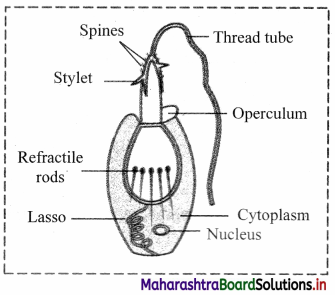
2. Colloblast
Answer:

![]()
Question 10.
Mention the unique features of phylum Platyhelminthes.
Answer:
The members of this phylum are called as flatworms.
Unique features of phylum Platyhelminthes:
- Body shape: Body of these animals is dorsoventrally flattened.
- Coelom: They are acoelomates.
- Germ layers: Platyhelminthes are triploblastic.
- Body organization: They show organ-system grade of organization.
- Forms: Most of them are endoparasites and few are free-living. Parasitic forms have hooks and suckers for attachment to the hosts’ body. In parasitic forms, body is covered by cuticle and in free-living forms it is covered by cilia.
- Digestive system: Parasitic forms generally lack digestive system. In free-living forms, the digestive system is incomplete.
- Body plan: They show blind-sac body plan.
- Excretion and osmoregulation: It occurs by flame cells or protonephridia.
- Reproduction: They are mostly hermaphrodite (bisexual).
- Self-fertilization is seen. Few animals show high power of regeneration and show polyembryony.
e.g. Planaria, Taenia (Tapeworm), Fasciola (Liver fluke) are included in this phylum.
Question 11.
Identify the organisms and label their diagrams,
Question 1.
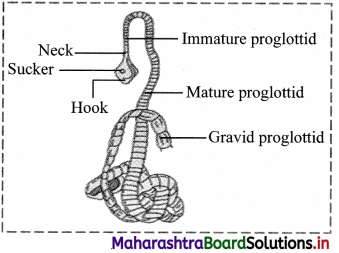
Answer:
The given organism is Taenia or Tapeworm.
Question 2.
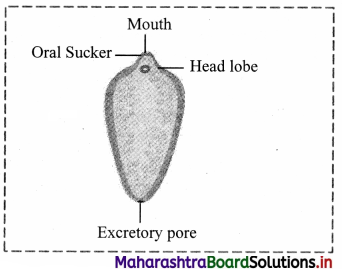
Answer:
The given organism is Fasciola or Liver fluke.
Question 3.
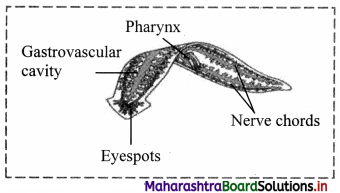
Answer:
The given organism is Planaria.
Question 4.
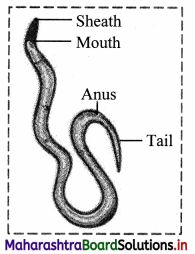
Answer:
The given organism is Wuchereria.
![]()
Question 12.
Describe the characteristics of Aschelminthes.
Answer:
Phylum Aschelminthes (ascus – sac, helminth – worm) is also called as Nemathelminthes (Nema = thread, helmins = worms).
Characteristics of Aschelminthes:
- Forms: These are mostly parasitic. However, few forms are free-living.
- Body shape: The body is long, cylindrical, thread-like, circular in cross-section, hence they are known as roundworms.
- Body symmetry: These are bilaterally symmetrical.
- Coelom: They are pseudocoelomate animals.
- Germ layers: These animals are triploblastic.
- Body plan: They show tube within a tube-type body plan.
- Body covering: The body is covered by tough, resistant cuticle.
- Muscles: Body wall has longitudinal muscles, but circular muscles are absent.
- Digestive system: Alimentary canal is complete with mouth and anus, at opposite ends.
- Excretion: Excretion takes place either by canals or gland cells.
- Nervous system: Nervous system consists of a nerve ring and nerves.
- Reproduction: Animals are unisexual i.e. sexes are separate.
- Fertilization is internal. Development may or may not include larval stages. It shows sexual dimorphism.
e.g. Ascaris (Roundworm), Wuchereria (filarial worm) and Ancylostoma (hookworm).
Question 13.
Explain the sexual dimorphism in Ascaris.
Answer:
Animals like Ascaris show sexual dimorphism. The male Ascaris is shorter and narrower than the female and has a curved posterior end with a pair of penial setae for copulation. The female Ascaris is relatively longer and broader and has a straight posterior end without penial setae.
Question 14.
Draw a neat and labelled diagram of Ascaris.
Answer:
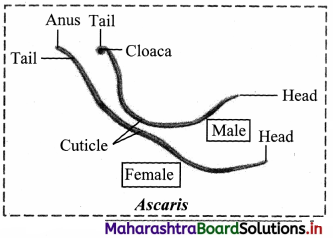
Question 15.
Enlist the characteristic features of phylum Annelida.
Answer:
Annelids are commonly called as ring worms or segmented worms.
Characteristic feature of phylum Annelida:
- Forms: Annelids may be aquatic, ectoparasitic or free – living or burrowing in moist soil.
- Body symmetry: They are bilaterally symmetrical.
- Body coelom: They are true coelomates.
- Segmentation: Body is metamerically segmented and has a special region called clitellum.
- Digestive system: Alimentary canal is complete.
- Locomotion: Locomotion takes place with the help of setae (earthworm), parapodia (Nereis) or suckers (leech). Well developed longitudinal and circular muscles help in locomotion.
- Nervous system: It consists of nerve ring and ventral solid and ganglionated nerve cord.
- Reproduction: Mostly are hermaphrodites and few are dioecious (Nereis).
- Respiration: Exchange of gases takes place through body wall.
- Circulation: Circulatory system is of closed type. Excretion and osmoregulation is carried out with help of nephridia. e.g. Nereis (Aquatic annelid), Pheretima (Earthworm), Hirudinaria (Leech).
![]()
Question 16.
Which phylum onwards all phyla show tube within tube body plan?
Answer:
Phylum Annelida onwards all phyla show tube within tube body plan.
Question 17.
State the unique features of phylum Mollusca.
Answer:
Mollusca (Mollis: Soft) is the second-largest phylum.
Unique features of phylum Mollusca:
- Habitat: They are aquatic or seen in marshy places. Few of them are terrestrial.
- Forms: Molluscs are either free-living or sedentary.
- Body plan: These are soft bodied and show tube within a tube type of body plan.
- Body symmetry: Most of the Molluscs show bilateral symmetry but few are asymmetrical due to torsion (twisting).
- Body division: Body consists of head, foot and visceral mass. Visceral mass is enclosed in thick, muscular fold of body wall called mantle. Mantle secretes a hard-calcareous shell, that may be external or internal or absent. Muscular foot is present ventrally.
- Digestive system: Digestive system is well-developed and complete with anterior mouth and posterior anus. Buccal cavity has a rasping organ called radula (helps in feeding), which is provided with transverse rows of teeth.
- Respiration: In aquatic forms, numerous feather-like gills called ctenidia, help in aquatic respiration. Terrestrial forms may show the presence of lungs.
- Circulatory system: Circulatory system is of open type (except in Sepia, where it is of the closed type). Blood contains a copper-containing blue-coloured respiratory pigment called hemocyanin.
- Excretion: Excretion occurs by kidney-like structures, also called ‘Organ of Bojanus’.
- Nervous system and sense organs; Nervous system has three rjahs of Mf hxese,
interconnected by commissures and connectives. - Sense organs: Sense organs such as eyes for vision, tentacles for tactile sensation and osphradia for testing purity of water is present.
- Sexual reproduction: Sexes are usually separate. Animals of this phylum are mostly oviparous and the development is direct or indirect.
e.g. Pila, Spisula (Bivalve), Octopus (devil fish), Sepia (cuttle fish), Chaetopleura (Chiton), Pinctada (Pearl oyster), Loligo (Squid), Aplysia (Sea hare), Dentalium (Tusk shell).
Question 18.
Give the economic importance of molluscs.
Answer:
Economic importance of molluscs:
- Pearl oyster (Pinctada) gives precious pearls.
- Many molluscs are edible.
- Molluscan shells are rich source of calcium.
Question 19.
Fill in the blanks.
- The stinging cells on the tentacles of cnidarians are known as _______.
- Laccifer lacca which produces lac, belongs to phylum __________.
- Excretion in molluscs occurs by _________.
- The annelid with locomotory structures like setae is ________.
Answer:
- cnidoblasts
- Arthropoda
- Organ of Bojanus
- earthworm
![]()
Question 20.
Identify the phylum to which the given organism belongs to and enlist the characteristics of this phylum.
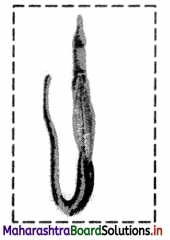
Answer:
The given organism (Balanoglossus) belongs to phylum Hemichordata.
Characteristics of phylum Hemichordata:
- Habitat: Hemichordates are exclusively marine animals, usually living at the bottom of the sea in burrows. These are mostly free – living but animals like Rhabdopleura are sedentary.
- Body shape and division: Body is soft and vermiform. It is unsegmented and divided into three parts namely – proboscis, collar and trunk.
- Digestive system: Alimentary canal is complete, straight or ‘U’ shaped. Buccal cavity gives rise to a rod-like buccal diverticulum.
- Respiration: Respiration is brought about by numerous gills arranged in two longitudinal rows present in the pharyngeal region. Gills open by gill slits.
- Circulation: Circulatory system is simple and open type.
- Excretion: It takes place with help of with the glomerulus.
- Nervous system: Nervous tissue is embedded in epidermis on the dorsal as well as the ventral side.
- Reproduction and development: Sexes are separate (sometimes bisexual). Fertilization is external and development is indirect through free swimming larva.
Question 21.
Name the various subphyla of phylum chordata.
Answer:
Subphyla of phylum chordata:
- Urochordata
- Cephalochordata
- Vertebrata
Question 22.
Members of which subphyla are called protochordates?
Answer:
The members of subphyla – Urochordata and Cephalochordata are collectively called protochordates.
Question 23.
Which subphylum includes the tunicates or ascidians?
Answer:
Subphylum Urochordata includes tunicates or Ascidians.
![]()
Question 24.
Give the distinguishing features of Tunicata.
Answer:
Distinguishing features of Tunicata or Urochordata:
- Habitat: They are exclusively marine.
- Body covering: Soft body is covered by ‘test’ or ‘tunic’ which is made up of tunicine.
- Notochord: Notochord is present only in the tail of the larva and is lost during metamorphosis. Hence, the name Urochordata.
- Respiration: Pharynx with many gill slits for respiration.
- Circulation: Closed circulatory system is present.
- Reproduction: Development is indirect, e. g. Herdmania, Salpa, Doliolum, Ascidia.
Question 25.
Write a short note on lancelets.
Answer:
- Cephalochordates are also known as lancelets and are small fish-like animals that rarely exceed 5 cm in length.
- Lancelets are exclusively marine and live partly buried in soft marine sediments.
- Notochord extends throughout entire length of the body and persists throughout life.
- Myotomes (muscle blocks) are present.
- Post anal tail is present.
- Circulatory system is closed type. Blood lacks pigment, e.g. Branchiostoma
Question 26.
Classify Branchiostoma.
Answer:
Classification of Branchiostoma:
Kingdom: Animalia Phylum: Chordata Subphylum: Cephalochordata
Question 27.
In some chordates, the notochord is replaced by cartilaginous or bony vertebral column. Name the chordates which possess this character.
Answer:
Vertebrates
![]()
Question 28.
Explain in brief the divisions of sub-phylum Vertebrata.
Answer:
Sub-phylum vertebrata is divided into two divisions: Agnathostomata (lacks jaw) and Gnathostomata (bears jaw) on the basis of presence/absence of jaws.
1. Division Agnathostomata:
This division consist of the lowest or most primitive vertebrates that lack jaws.
They include only one class of living vertebrates, the Cyclostomata.
2. Division Gnathostomata:
This division includes animals with jaws.
It is divided into two superclasses: Pisces (bear fins) and Tetrapoda (bear four limbs)
[Note: Students can scan the given Q.R code for understanding the characteristics of vertebrates.]
Question 29.
Mention the characteristic feature of class Cyclostomata.
Answer:
Characteristic features of class Cyclostomata (Cyclos: Circular, stoma-mouth) Lat/Grk
- Members of class Cyclostomata are jaw-less and eel like organisms.
- Their skin is devoid of scales, soft and smooth, containing unicellular mucus glands.
- Median fms are present but paired fins are absent.
- They are ectoparasites on fishes.
- They have sucking circular mouth, without jaws.
- Cranium and vertebral column are made up of cartilage.
- Their digestive system lacks stomach.
- Respiration occurs by 6 – 15 pairs of gill slits. Gills slits are without operculum.
- Heart is two chambered with one auricle and one ventricle.
- Gonad is single, large and without gonoduct.
- Fertilization is external. They are anadromous as they migrate for spawning to fresh – water from marine habitat.
- After spawning, they die within few days. Larvae metamorphosize and migrate to ocean.
e.g Petromyzon (Lamprey), Myxine (Hagfish).
Question 30.
Mention the important features of superclass Pisces.
Answer:
Important features of superclass Pisces:
- Habitat: These are aquatic animals and are present in fresh, marine and brackish waters.
- Body temperature: Pisces are poikilothermic animals i.e., cold blooded animals, in which body temperature changes according to the change in the surrounding temperature.
- Sensory organs:They have lateral line system which shows the presence of rheoreceptors for the detection of water current.
- Locomotion: Locomotion is by body muscles and fins. Caudal fin helps in steering wheel.
- Skeleton: Exoskeleton is made up of dermal scales. It is either bony or cartilaginous.
- Body shape: Body is streamlined and boat-shaped and helps to overcome resistance during swimming.
- Respiration: Respiration is by gills.
- Circulation: It shows single and closed circulation. Heart is two-chambered and ventral in position. Heart of fishes is described as venous heart (presence of deoxygenated blood).
- Nervous system: They have a well-developed brain with large olfactory lobes.
- Reproduction: Sexes are separate. Most of the fishes are oviparous, however some are viviparous.
![]()
Question 31.
Distinguish between Chondrichthyes and Osteichthyes.
Answer:
| Chondrichthyes | Osteichthyes |
| 1. Endoskeleton is made of cartilage. | Endoskeleton is made of bones. |
| 2. Exoskeleton is made of minute scales called placoid scales. | Exoskeleton is made of large, flat and overlapping cycloid or ctenoid scales. |
| 3. Mouth is ventral in position. | Mouth is mostly terminal in position. |
| 4. 5-7 pairs of gill slits without operculum are present. | Four pairs of gills covered by operculum are present. |
| 5. Caudal fin is heterocercal. | Caudal fin is homocercal. |
| 6. Males have copulatory organs called claspers located between the pelvic fins. | Males lack claspers. |
| 7. Air bladder is absent. | Air bladder is present to maintain buoyancy. Thus, these fishes do not need to swim constantly. |
| 8. Fertilization is internal. | Fertilization is external. |
| 9. Many of them are viviparous animals. | They are oviparous animal |
| 10. Scolidon (Dogfish), Pristis (Sawfish), Electric ray, Common skate, Hammer headed shark, Carcharodon (Great white shark), Trygon (Stingray), Anoxypristis. | Exocoetus (Flying fish), Hippocampus (Sea horse), Labeo rohita, Pomphret (Rohu), Catla (Katla), Clarius (Magur), Pterophyllum (Angle fish), Bombay duck, Lung fishes (Protopterus, Lepidosireri), Aquarium fishes like Betta (Fighting fish). |
Question 32.
Match the columns:
| Column I (Organism) | Column II (Characteristic Feature) |
| 1. Euplectella | (a) Exoskeleton formed of placoid scales |
| 2. Periplaneta | (b) Presence of mantle |
| 3. Sepia | (c) Water canal system |
| 4. Scoliodon | (d) Jointed appendages |
| 5. Clarias | (e) Exoskeleton formed of cycloid scales |
Answer:
| Column I (Organism) | Column II (Characteristic Feature) |
| 1. Euplectella | (c) Water canal system |
| 2. Periplaneta | (d) Jointed appendages |
| 3. Sepia | (b) Presence of mantle |
| 4. Scoliodon | (a) Exoskeleton formed of placoid scales |
| 5. Clarias | (e) Exoskeleton formed of cycloid scales |
Question 33.
What are tetrapods?
Answer:
Tetrapods are group of vertebrates that includes amphibians, reptiles, birds and mammals. It includes animals that bear two pairs of appendages (with some exceptions e.g. Snakes are limbless, etc.)
![]()
Question 34.
Write a short note on amphibians.
Answer:
- These animals live on land as well as in water (freshwater only).
- Amphibians are poikilothermic animals.
- Body is differentiated into head, and trunk. Neck and tail are absent in many adults with few exceptions.
- Two pairs of limbs arise from the pectoral and pelvic girdles respectively, which help in locomotion.
- Skin is moist and glandular with mucous glands.
- Exoskeleton is absent.
- Eyelids are present. Tympanum represents the ear.
- Excretory products, digestive products and gametes are released through the common chamber cloaca.
- Circulatory system is of closed type. Heart is three-chambered and ventral. RBCs are biconvex and nucleated.
- Respiration is by skin, lungs and bucco-pharynx.
- Nervous system is well developed.
- Sexes are separate. Amphibians are oviparous. Fertilization is external and development is indirect through aquatic larval stage.
- They exhibit metamorphosis. e.g. Rana (Frog), Bufo (Toad), Salamandra (Salamander), Ichthyophis, Hyla (Tree frog), etc.
Question 35.
Name the limbless amphibian.
Answer:
Ichthyophis is a limbless amphibian.
Question 36.
Complete the table.
| Phylum/Class | Excretory organ | Circulation | Respiratory organ |
| Arthropoda | Lungs/Gills/Tracheal system | ||
| Nephridia | Closed | Skin/Parapodia | |
| Organ of Bojanus | Open | ||
| Amphibia | Closed | Lung |
Answer:
| Phylum/Class | Excretory organ | Circulation | Respirators organ |
| Arthropoda | Malpighian tubule | Open | Lungs/Gills/Tracheal system |
| Annelida | Nephridia | Closed | Skin/Parapodia |
| Mollusca | Organ of Bojanus | Open | Ctenidia |
| Amphibia | Kidneys | Closed | Lung |
![]()
Question 37.
Give the diagnostic characters of Reptilia.
Answer:
Diagnostic characters of Reptilia:
- Habitat: They are crawling animals. They are the first true terrestrial vertebrates. Few may be aquatic or semi- aquatic and are also found in marshy areas.
- Locomotion: Locomotion occurs by limbs in most animals. The limbs are pentadactyl with clawed digits, which help the animal to walk, creep or crawl. Snakes are limbless and crawl on their belly.
- Body temperature: They are poikilotherms.
- Exoskeleton: Skin is dry, non-glandular and covered by an exoskeleton of epidermal scales or scutes, shields or plates. Lizards and snake shed their skin periodically.
- Ear: Tympanum is present
- Circulatory system: It has two complete auricles but the ventricles are incompletely partitioned. Therefore, the heart of reptiles is not perfectly four chambered (except in crocodile the heart is four chambered).
- Nervous system: The brain is well developed. The olfactory lobes and cerebellum are better developed as compared to amphibians.
- Reproduction: Sexes are separate and exhibit prominent sexual dimorphism. Fertilization is internal and the animals are oviparous (exception – viper, it is viviparous). They show little parental care.
- e.g. Naja naja (Cobra), Hemidactylus (Wall lizard), Chelonia (Turtle), Crocodilus (Crocodile), Testudo (Tortoise), Chameleon (Tree lizard), Bangarus (Krait), Vipera (Viper).
Question 38.
Enlist the salient features of class Aves.
Answer:
The salient features of class Aves:
- Habitat: These animals are aerial in habitat.
- Locomotion: Forelimbs are modified into wings for flying. Hind limbs are used for walking, clasping tree branches and running. Aquatic birds have webbed toes. This helps in swimming, e.g. Duck.
- Body division: Body is differentiated into head, neck, trunk and tail.
- Body shape: Body is streamlined (boat-shaped) to reduce resistance during flight.
- Body temperature: These are warm-blooded animals (homeotherms) i.e., keep the body temperature constant irrespective of fluctuations in environmental temperature.
- Exoskeleton: Exoskeleton is made up of feathers. Scales are present on hind-limbs. Skin is thin, dry and non-glandular except oil gland at the base of tail (uropygial gland).
- Endoskeleton: Bones are hollow (pneumatic) with air cavities to reduce body weight.
- Digestion: Jaws are modified into beaks. Teeth are absent. Special structures such as crop and gizzard are present.
- Circulatory system: They show double circulation. Blood is red in colour due to presence of biconvex and nucleated RBCs. Heart is perfectly four-chambered, with two auricles and two ventricles.
- Respiration: Respiration occurs by lungs. Presence of air sacs increases the buoyancy.
- Nervous system: Brain is enlarged with a well developed cerebellum for equilibrium.
- Reproduction: Sexes are separate and the animals exhibit prominent sexual dimorphism.
- The female shows presence of only left ovary and left oviduct.
This helps to reduce body weight during flying. Fertilization is internal. Avians are oviparous. Parental care is very well developed.
e.g. Columba (Pigeon), Psittacula (Parrot), Struthio (Ostrich), Kiwi, Aptenodytes (Penguin), Corvus (Crow), Neophron (Vulture), Passer (Sparrow), Pavo (Peacock), etc.
Question 39.
Name the flightless bird.
Answer:
Ostrich
![]()
Question 40.
Give important features of class Mammalia.
Answer:
Features of class Mammalia (mammae: breasts, nipple):
- Special feature: Presence of mammary glands (milk-producing glands) for the nourishment of young ones. Mammary glands are modified sweat glands.
- Habitat: Mammals are omnipresent (present everywhere). These are mostly terrestrial, some are aquatic and few are aerial and arboreal (living on trees).
- Locomotion: Limbs are the organs of locomotion and are modified for walking, climbing, burrowing, swimming, etc.
- Body division: Body is differentiated into head, neck, trunk and tail. They have external ear (pinna).
- Body temperature: Mammals are homeotherms or warm-blooded animals.
- Exoskeleton: It is in the form of hair, fur, nails, hooves, horns, etc.
- Skin: Skin is glandular and has sweat glands and sebaceous (oil) glands.
- Mouth cavity: Mammals show heterodont dentition (various types of teeth like incisors, canines, premolars and molars).
- Circulation: Heart is ventral in position, four chambered with two auricles and two ventricles. RBCs are biconcave and enucleated (except camel). Blood is red in colour.
- Respiration: Respiration takes place by lungs.
- Nervous system: Brain is highly developed. Cerebrum shows a transverse band called corpus callosum.
- Reproduction and development: Only few mammals are oviparous, e.g. Duck billed platypus. Some have pouches for development of immature young ones. These are called marsupials, e.g. Kangaroo. Most of the mammals are placental and viviparous.
Question 41.
Give examples of animals belonging to class Mammalia.
Answer:
Bat, Rattus(rat), Macaca (monkey), Camelus (camel), Whale, Human being, Canis (dog), Elephas (elephant), Equus (horse), Pteropus (flying fox), Ornithorhynchus (platypus), Macropus (kangaroo), Trachypithecus.
Question 42.
Distinguish between Reptilia, Amphibia and Aves.
Answer:
| Reptilia | Amphibia | Aves |
| Members of Reptilia are terrestrial, with few exceptions. | Members of Amphibia live on land as well as in water. | Aves are terrestrial and aquatic. |
| They are poikilothermic. | They are poikilothermic. | They are homeothermic. |
| All reptiles have three chambered heart, except for crocodiles. | They have three chambered heart. | They have four-chambered heart. |
| Olfactory lobes and cerebellum are better developed than those of amphibians. | Olfactory lobes and cerebellum are less developed as compared to reptiles. | Cerebellum is well developed for equilibrium. |
| Skin is dry, non-glandular and covered by scales and plates. | Skin is moist, glandular with mucous glands. | Skin is thin, dry, non-glandular except oil gland at the base of tail. |
| Digits bear claws. | Digits do not bear claws. | Digits bear claws. |
| Exoskeleton bears epidermal scales or scutes, shields or plates. | Exoskeleton is absent. | Exoskeleton is made up of feathers. |
![]()
Question 43.
Name the phyla to which the following animals belong:
Question 1.
Diploria
Answer:
Cnidaria
Question 2.
Ancyclostoma
Answer:
Aschelminthes
Question 3.
Nereis
Answer:
Annelida
Question 4.
Hottentotta
Answer:
Arthropoda
Question 5.
Chaetopleura
Answer:
Mollusca
Question 6.
Ophiothrix
Answer:
Echinodermata
Question 7.
Rhabdopleura
Answer:
Hemichordata
Question 8.
Exocoetus
Answer:
Chordata
Question 9.
Lepidosiren
Answer:
Chordata
![]()
Question 44.
Apply Your Knowledge:
Question 1.
A college conducted an inter-college quiz competition. During a round in the quiz, the students were asked to identify animals with respect to their characteristic features given below.
- A limbless reptile
- Gastrovascular cavity in Hydra
- The phylum which includes ringworms or segmented worms
- An oviparous mammal
- The phylum which includes comb jellies
Answer:
- Snake
- Coelenteron
- Phylum Annelida
- Duck-billed platypus
- Phylum Ctenophora
Question 45.
An organism has long cylindrical thread-like body. Its body wall has longitudinal muscles but no circular muscles. It is a pseudocoelomate. Identify the phylum to which it belongs.
Answer:
Aschelminthes
Question 46.
Classify the given animals in their respective groups.
Macropus, Struthio, Equus, Bufo, Anura, Salamander, Naja naja, Hippocampus, Bombay duck, Lamprey, Hagfish, Doliolum, Aplysia, Wuchereria, Physalia, Euplectella, Krait, Scypha, Ctenoplana, Brain coral, Obelia, Loligo.
Answer:
| Phylum / Subphylum / Class | Animals |
| 1. Porifera | Euplectella, Scypha |
| 2. Cnidaria | Physalia, Brain Coral, Obelia |
| 3. Ctenophora | Ctenoplana |
| 4. Mollusca | Aplysia, Loligo |
| 5. Aschelminthes | Wuchereria |
| 6. Osteichthyes | Hippocampus, Bombay duck |
| 7. Cyclostomata | Lamprey, Hagfish |
| 8. Urochordata | Doliolum |
| 9. Amphibia | Bufo, Anura, Salamander |
| 10. Reptilia | Naja naja, Krait |
| 11. Aves | Struthio |
| 12. Mammalia | Macropus, Equus |
![]()
Question 47.
Match the Column.
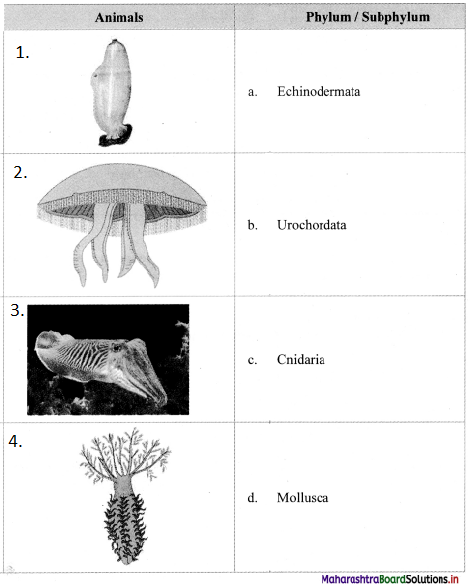
Answer:
1 – b,
2 – c,
3 – d,
4 – a
Quick Review:
Classification of animals at a glance:
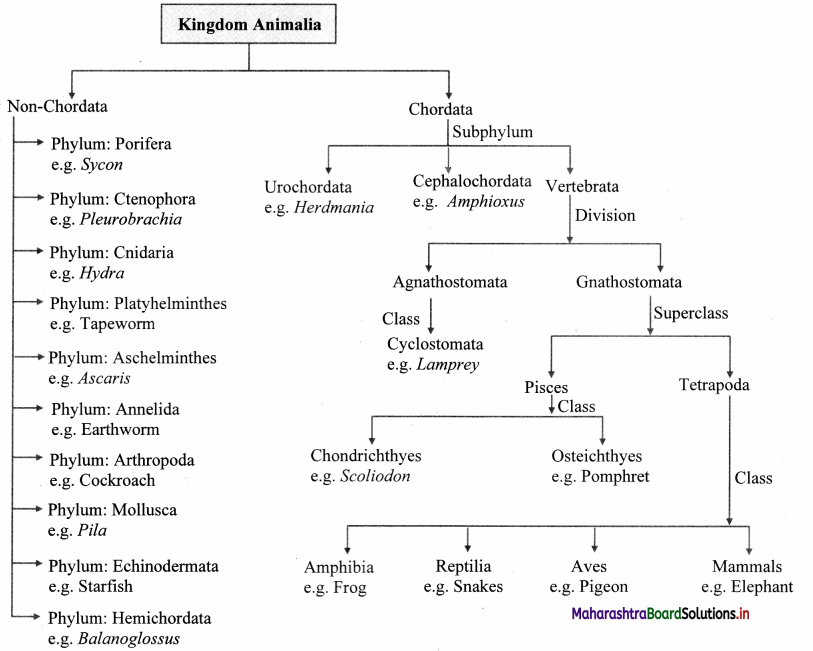
Question 48.
Exercise:
Question 1.
Give the difference between diploblastic and triploblastic animals?
Answer:
Number of germ layers:
(a) When an organism shows only two germ layers, they are called diploblastic animals. In this case, the outer ectoderm is separated from the inner endoderm by a non-living substance called mesoglea.
(b) When an organism shows three germinal layers, they are called triploblastic animals. The three layers are namely – outer ectoderm, middle mesoderm and inner endoderm.
![]()
Question 2.
Name the superclass under the division Gnathostomata.
Answer:
Division Gnathostomata:
This division includes animals with jaws.
It is divided into two superclasses: Pisces (bear fins) and Tetrapoda (bear four limbs)
[Note: Students can scan the given Q.R code for understanding the characteristics of vertebrates.]
Question 3.
In which group, notochord is present only in the tail of larva.
Answer:
Notochord: Notochord is present only in the tail of the larva and is lost during metamorphosis. Hence, the name Urochordata.
Question 4.
Comment on respiration in Aves.
Answer:
Respiration: Respiration occurs by lungs. Presence of air sacs increases the buoyancy.
Question 5.
Aves and Pisces have stream-lined body.
What is the significance of this type of body.
Answer:
Exoskeleton: Exoskeleton is made up of feathers. Scales are present on hind-limbs. Skin is thin, dry and non-glandular except oil gland at the base of tail (uropygial gland).
Question 6.
Which type of circulation occurs in Aves?
Answer:
Circulatory system: They show double circulation. Blood is red in colour due to presence of biconvex and nucleated RBCs. Heart is perfectly four chambered, with two auricles and two ventricles.
Question 7.
Which group of chordates possess sucking and circular mouth without jaws?
Answer:
Characteristic features of class Cyclostomata (Cyclos: Circular, stoma-mouth) Lat/Grk
- Members of class Cyclostomata are jaw-less and eel like organisms.
- Their skin is devoid of scales, soft and smooth, containing unicellular mucus glands.
- Median fms are present but paired fins are absent.
- They are ectoparasites on fishes.
- They have sucking circular mouth, without jaws.
- Cranium and vertebral column are made up of cartilage.
- Their digestive system lacks stomach.
- Respiration occurs by 6 – 15 pairs of gill slits. Gills slits are without operculum.
- Heart is two chambered with one auricle and one ventricle.
- Gonad is single, large and without gonoduct.
- Fertilization is external. They are anadromous as they migrate for spawning to fresh – water from marine habitat.
- After spawning, they die within few days. Larvae metamorphosize and migrate to ocean.e.g Petromyzon (Lamprey), Myxine (Hagfish).
Question 8.
Give any four characteristic features of sponges.
Answer:
Phylum Porifera (Pori = Pores: feron = bearing): Members of the phylum Porifera are also called sponges. Characteristic features of the phylum:
- Habitat: They are aquatic, mostly marine but few species are found in freshwater.
- Forms: They are sedentary animals (attached to substratum or rock).
- Body shape: They have asymmetrical body. Body of these animals consists of many cells with minimal
division of labour among cells. Hence, their body is considered as a colony of different types of cells. - Body surface: Their body bears minute pores called ‘ostia’ through which water enters the spongocoel (body cavity). Water leaves the body through a large opening called ‘osculum’. Beating of flagella creates water current.
- Circulation: Water is circulated in the body through the ‘canal system’. When the water enters the body of poriferans, cells absorb the food, exchange respiratory gases and release excretory products.
- Digestive system: The body cavity of sponges (spongocoel) is lined by unique type of flagellated cells called choanocytes or collar cells for digestion.
- Endoskeleton: The body of sponges consists of calcareous / siliceous spicules and proteinaceous ‘spongin fibres’.
- Reproduction: Sponges reproduce asexually as well as sexually. Asexual reproduction takes place by fragmentation and gemmule formation. Sexual reproduction is by formation of gametes. Fertilization is internal and development is indirect through larval stage.
- Sponges have great power of regeneration.
e.g. Scypha, Euspongia (Bath sponge), Euplectella (Venus’ flower basket).
![]()
Question 9.
Mention the role of cnidoblasts.
Answer:
Cnidoblasts: Presence of cnidoblasts or stinging cells are present on the tentacles for anchorage, offence and defence.
Question 10.
Name the oil gland present at the base of tail in Aves.
Answer:
Exoskeleton: Exoskeleton is made up of feathers. Scales are present on hind-limbs. Skin is thin, dry and non-glandular except oil gland at the base of tail (uropygial gland).
Question 11.
Why are cyclostomes termed as anadromous?
Answer:
Nervous system: Brain is enlarged with a well developed cerebellum for equilibrium.
Question 12.
Write a short note on Urochordates.
Answer:
Distinguishing features of Tunicata or Urochordata:
- Habitat: They are exclusively marine.
- Body covering: Soft body is covered by ‘test’ or ‘tunic’ which is made up of tunicine.
- Notochord: Notochord is present only in the tail of the larva and is lost during metamorphosis. Hence, the name Urochordata.
- Respiration: Pharynx with many gill slits for respiration.
- Circulation: Closed circulatory system is present.
- Reproduction: Development is indirect, e. g. Herdmania, Salpa, Doliolum, Ascidia.
Question 13.
Enlist the characters of second largest phylum of animal kingdom.
Answer:
Mollusca (Mollis: Soft) is the second largest phylum.
Unique features of phylum Mollusca:
- Habitat: They are aquatic or seen in marshy places. Few of them are terrestrial.
- Forms: Molluscs are either free-living or sedentary.
- Body plan: These are soft bodied and show tube within a tube type of body plan.
- Body symmetry: Most of the Molluscs show bilateral symmetry but few are asymmetrical due to torsion (twisting).
- Body division: Body consists of head, foot and visceral mass. Visceral mass is enclosed in thick, muscular fold of body wall called mantle. Mantle secretes a hard-calcareous shell, that may be external or internal or absent. Muscular foot is present ventrally.
- Digestive system: Digestive system is well-developed and complete with anterior mouth and posterior anus. Buccal cavity has a rasping organ called radula (helps in feeding), which is provided with transverse rows of teeth.
- Respiration: In aquatic forms, numerous feather-like gills called ctenidia, help in aquatic respiration. Terrestrial forms may show the presence of lungs.
- Circulatory system: Circulatory system is of open type (except in Sepia, where it is of the closed type). Blood contains a copper containing blue coloured respiratory pigment called haemocyanin.
- Excretion: Excretion occurs by kidney like structures, also called ‘Organ of Bojanus’.
- Nervous system and sense organs; Nervous system has three rjahs of Mf hxese t&e,
interconnected by commissures and connectives. - Sense orgAnswer:Sense organs such as eyes for vision, tentacles for tactile sensation and osphradia for testing purity of water is present.
- Sexual reproduction: Sexes are usually separate. Animals of this phylum are mostly oviparous and the development is direct or indirect.
- e.g. Pila, Spisula (Bivalve), Octopus (devil fish), Sepia (cuttle fish), Chaetopleura (Chiton), Pinctada (Pearl oyster), Loligo (Squid), Aplysia (Sea hare), Dentalium (Tusk shell).
Question 14.
Members of which phylum are known as segmented or ring worms?
Answer:
Annelids are commonly called as ring worms or segmented worms.
Characteristic feature of phylum Annelida:
- Forms: Annelids may be aquatic, ectoparasitic or free – living or burrowing in moist soil.
- Body symmetry: They are bilaterally symmetrical.
- Body coelom: They are true coelomates.
- Segmentation: Body is metamerically segmented and has a special region called clitellum.
- Digestive system: Alimentary canal is complete.
- Locomotion: Locomotion takes place with the help of setae (earthworm), parapodia (Nereis) or suckers (leech). Well developed longitudinal and circular muscles help in locomotion.
- Nervous system: It consists of nerve ring and ventral solid and ganglionated nerve cord.
- Reproduction: Mostly are hermaphrodites and few are dioecious (Nereis).
- Respiration: Exchange of gases takes place through body wall.
- Circulation: Circulatory system is of closed type. Excretion and osmoregulation is carried out with help of nephridia. e.g. Nereis (Aquatic annelid), Pheretima (Earthworm), Hirudinaria (Leech).
![]()
Question 15.
Mention the unique features of ctenophores.
Answer:
The members of this phylum are commonly known as comb jellies and sea walnuts. They are also known as acnidarians as they lack cnidoblasts. The phylum is considered as one of the minor phyla as it is represented by very few members.
Salient features of phylum Ctenophora:
- Habitat: They are exclusively marine.
- Forms: They are free swimming animals.
- Germ layers: Members of this phylum are diploblastic.
- Body Symmetry: They are radially symmetrical.
- Body plan: The animals of this phylum show blind-sac body plan.
- Body organization: They show tissue level organization.
- Locomotion: It is earned out by eight rows of ciliated comb plates.
- Bioluminescence: It is the characteristic feature of the members of this phylum.
- Digestion: It is extracellular and intracellular.
- Reproduction: Reproduction is sexual with indirect development.
- Colloblasts: These sticky cells are used to capture prey, e.g. Pleurobrachia, Ctenoplan
Question 16.
What is ecdysis?
Answer:
Exoskeleton: Body is covered by a tough, non – living chitinous exoskeleton. As the exoskeleton does not allow body growth, arthropods shed off their exoskeleton periodically during growth. This process is called moulting or ecdysis.
Question 17.
Give the characteristic features of class Cephalochordata.
Answer:
- Cephalochordates are also known as lancelets and are small fish-like animals that rarely exceed 5 cm in length.
- Lancelets are exclusively marine and live partly buried in soft marine sediments.
- Notochord extends throughout entire length of the body and persists throughout life.
- Myotomes (muscle blocks) are present.
- Post anal tail is present.
- Circulatory system is closed type. Blood lacks pigment, e.g. Branchiostoma
![]()
Question 18.
Give an example of:
Question 1.
Animals whose body is covered by shell.
Answer:
Mollusca (Mollis: Soft) is the second largest phylum.
Unique features of phylum Mollusca:
- Habitat: They are aquatic or seen in marshy places. Few of them are terrestrial.
- Forms: Molluscs are either free-living or sedentary.
- Body plan: These are soft bodied and show tube within a tube type of body plan.
- Body symmetry: Most of the Molluscs show bilateral symmetry but few are asymmetrical due to torsion (twisting).
- Body division: Body consists of head, foot and visceral mass. Visceral mass is enclosed in thick, muscular fold of body wall called mantle. Mantle secretes a hard-calcareous shell, that may be external or internal or absent. Muscular foot is present ventrally.
- Digestive system: Digestive system is well-developed and complete with anterior mouth and posterior anus. Buccal cavity has a rasping organ called radula (helps in feeding), which is provided with transverse rows of teeth.
- Respiration: In aquatic forms, numerous feather-like gills called ctenidia, help in aquatic respiration. Terrestrial forms may show the presence of lungs.
- Circulatory system: Circulatory system is of open type (except in Sepia, where it is of the closed type). Blood contains a copper containing blue coloured respiratory pigment called haemocyanin.
- Excretion: Excretion occurs by kidney like structures, also called ‘Organ of Bojanus’.
- Nervous system and sense organs; Nervous system has three rjahs of Mf hxese,
interconnected by commissures and connectives. - Sense organs: Sense organs such as eyes for vision, tentacles for tactile sensation and osphradia for testing purity of water is present.
- Sexual reproduction: Sexes are usually separate. Animals of this phylum are mostly oviparous and the development is direct or indirect.
- e.g. Pila, Spisula (Bivalve), Octopus (devil fish), Sepia (cuttle fish), Chaetopleura (Chiton), Pinctada (Pearl oyster), Loligo (Squid), Aplysia (Sea hare), Dentalium (Tusk shell).
Question 2.
Animals with organs of Bojanus for excretion.
Answer:
Mollusca (Mollis: Soft) is the second largest phylum.
Unique features of phylum Mollusca:
- Habitat: They are aquatic or seen in marshy places. Few of them are terrestrial.
- Forms: Molluscs are either free-living or sedentary.
- Body plan: These are soft bodied and show tube within a tube type of body plan.
- Body symmetry: Most of the Molluscs show bilateral symmetry but few are asymmetrical due to torsion (twisting).
- Body division: Body consists of head, foot and visceral mass. Visceral mass is enclosed in thick, muscular fold of body wall called mantle. Mantle secretes a hard-calcareous shell, that may be external or internal or absent. Muscular foot is present ventrally.
- Digestive system: Digestive system is well-developed and complete with anterior mouth and posterior anus. Buccal cavity has a rasping organ called radula (helps in feeding), which is provided with transverse rows of teeth.
- Respiration: In aquatic forms, numerous feather-like gills called ctenidia, help in aquatic respiration. Terrestrial forms may show the presence of lungs.
- Circulatory system: Circulatory system is of open type (except in Sepia, where it is of the closed type). Blood contains a copper-containing blue coloured respiratory pigment called haemocyanin.
- Excretion: Excretion occurs by kidney like structures, also called ‘Organ of Bojanus’.
- Nervous system and sense organs; Nervous system has three rjahs of Mf hxese,
interconnected by commissures and connectives. - Sense organs: Sense organs such as eyes for vision, tentacles for tactile sensation and osphradia for testing purity of water is present.
- Sexual reproduction: Sexes are usually separate. Animals of this phylum are mostly oviparous and the development is direct or indirect.
- e.g. Pila, Spisula (Bivalve), Octopus (devil fish), Sepia (cuttle fish), Chaetopleura (Chiton), Pinctada (Pearl oyster), Loligo (Squid), Aplysia (Sea hare), Dentalium (Tusk shell).
![]()
Question 19.
Distinguish between Arthropoda and Mollusca
Answer:
Arthropoda (Arthros: Joint, Podos: leg): Arthropoda forms the largest phylum of kingdom Animalia. Characteristics of Arthropoda:
a. Habitat: Arthropods are omnipresent.
b. Forms: Solitary or colonial, most of them are free-living. Barnacles are sedentary. Few are parasitic and sanguivorous, (e.g. Female mosquito, bed bug.)
c. Body symmetry: Body is bilaterally symmetrical.
d. Germ layers: They are triploblastic.
e. Body cavity: Arthropods are eucoelomates.
f. Body plan: They show tube within tube body plan.
g. Level of body organization: They show organ system level of organization.
h. Special features: The members of this phylum have jointed appendages. Hence, they are known as arthropods. Some insects like honey bee, ants, termites, etc. exhibit polymorphism.
i. Exoskeleton: Body is covered by a tough, non – living chitinous exoskeleton. As the exoskeleton does not allow body growth, arthropods shed off their exoskeleton periodically during growth. This process is called moulting or ecdysis.
j. Body division: Body is divided into head, thorax and abdomen.
k. Segmentation: Body shows metameric segmentation.
l. Digestion: Digestive system is complete and divided into foregut, midgut and hindgut.
m. Circulation: Circulatory system is of open type wherein, blood flows through body cavity called haemocoel.
n. Respiration: Respiration occurs through respiratory organs like gills, trachea, book lungs or book
gills.
o. Excretion: Excretion takes place by green glands, Malpighian tubules or coxal glands.
p. Nervous system: Nervous system consists of nerve ring and double, ventral ganglionated nerve cord.
q. Sense organs:Arthropods have well developed sense organs in the form of antennae, simple or compound eye and various receptors.
r. Sexual reproduction: Sexes are generally separate in arthropods with distinct sexual dimorphism.
s. Significance:
Beneficial arthropods: Some arthropods are of economic importance. For example, Honey bees (Apis) are important for their honey and wax, silk worms for the production of silk. Lobsters, prawns, crabs are edible. Harmful arthropods: Some arthropods are harmful and act as vectors to spread various diseases, e.g., Mosquitoes. Locusta (locust) is a gregarious pest. Limulus (King crab) is a living fossil.
Other examples: Cockroach (Periplaneta), butterfly, scorpion (Hottentotta) and millipede (Archispirostreptus) prawn.
Mollusca (Mollis: Soft) is the second largest phylum.
Unique features of phylum Mollusca:
- Habitat: They are aquatic or seen in marshy places. Few of them are terrestrial.
- Forms: Molluscs are either free-living or sedentary.
- Body plan: These are soft bodied and show tube within a tube type of body plan.
- Body symmetry: Most of the Molluscs show bilateral symmetry but few are asymmetrical due to torsion (twisting).
- Body division: Body consists of head, foot and visceral mass. Visceral mass is enclosed in thick, muscular fold of body wall called mantle. Mantle secretes a hard-calcareous shell, that may be external or internal or absent. Muscular foot is present ventrally.
- Digestive system: Digestive system is well-developed and complete with anterior mouth and posterior anus. Buccal cavity has a rasping organ called radula (helps in feeding), which is provided with transverse rows of teeth.
- Respiration: In aquatic forms, numerous feather-like gills called ctenidia, help in aquatic respiration. Terrestrial forms may show the presence of lungs.
- Circulatory system: Circulatory system is of open type (except in Sepia, where it is of the closed type). Blood contains a copper containing blue coloured respiratory pigment called haemocyanin.
- Excretion: Excretion occurs by kidney like structures, also called ‘Organ of Bojanus’.
- Nervous system and sense organs; Nervous system has three rjahs of Mf hxese,
interconnected by commissures and connectives. - Sense organs: Sense organs such as eyes for vision, tentacles for tactile sensation and osphradia for testing purity of water is present.
- Sexual reproduction: Sexes are usually separate. Animals of this phylum are mostly oviparous and the development is direct or indirect.
- e.g. Pila, Spisula (Bivalve), Octopus (devil fish), Sepia (cuttle fish), Chaetopleura (Chiton), Pinctada (Pearl oyster), Loligo (Squid), Aplysia (Sea hare), Dentalium (Tusk shell).
![]()
Question 20.
Name the phylum that forms connecting link between Chordates and Non-chordates.
Answer:
- Hemiehordata was earlier considered as sub phylum of Chordata because the buccal diverticulum was considered as notochord. It is now placed as a separate phylum under Non-Chordata.
- It possesses certain characteristics of both Chordates and Non-chordates.
- Absence of notochord worm-like body, heart located on the dorsal side are the Non-chordate like characteristics seen in Hemiehordata.
- Presence of nerve chord, pharyngeal gill slits are some of the Chordate-like characters seen in Hemiehordata.
- Hence, Hemiehordata is considered as a connecting link between Non-chordata and Chordata.
Question 21.
Comment on the reproduction of the members of the phylum Platyhelminthes.
Answer:
The members of this phylum are called as flatworms.
Unique features of phylum Platyhelminthes:
- Body shape: Body of these animals is dorsoventrally flattened.
- Coelom: They are acoelomates.
- Germ layers: Platyhelminthes are triploblastic.
- Body organization: They show organ-system grade of organization.
- Forms: Most of them are endoparasites and few are free-living. Parasitic forms have hooks and suckers for attachment to the hosts’ body. In parasitic forms, body is covered by cuticle and in free-living forms it is covered by cilia.
- Digestive system: Parasitic forms generally lack digestive system. In free-living forms, the digestive system is incomplete.
- Body plan: They show blind-sac body plan.
- Excretion and osmoregulation: It occurs by flame cells or protonephridia.
- Reproduction: They are mostly hermaphrodite (bisexual). Self fertilization is seen.
- Few animals show high power of regeneration and show polyembryony. e.g. Planaria, Taenia (Tapeworm), Fasciola (Liver fluke) are included in this phylum.
Question 22.
Give a list of aerial adaptations shown by birds.
Answer:
- In birds, the forelimbs are modified into wings for flying.
- They possess stream-lined body to reduce resistance during flight.
- Bones are hollow or pneumatic to reduce body weight.
- In order to reduce body weight, urinary bladder is absent. Also, females possess only left ovary and oviduct.
- Body is covered by feathers to facilitate flying.
Question 23.
Write a short note on Superclass Pisces. Give one example.
Answer:
Important features of superclass Pisces:
- Habitat: These are aquatic animals and are present in fresh, marine and brackish waters.
- Body temperature: Pisces are poikilothermic animals i.e., cold blooded animals, in which body temperature changes according to the change in the surrounding temperature.
- Sensory orgAnswer:They have lateral line system which shows the presence of rheoreceptors for the detection of water current.
- Locomotion: Locomotion is by body muscles and fins. Caudal fin helps in steering wheel.
- Skeleton: Exoskeleton is made up of dermal scales. It is either bony or cartilaginous.
- Body shape: Body is streamlined and boat-shaped and helps to overcome resistance during swimming.
- Respiration: Respiration is by gills.
- Circulation: It shows single and closed circulation. Heart is two-chambered and ventral in position. Heart of fishes is described as venous heart (presence of deoxygenated blood).
- Nervous system: They have a well-developed brain with large olfactory lobes.
- Reproduction: Sexes are separate. Most of the fishes are oviparous, however some are viviparous.
![]()
Question 24.
Give any six salient features of class Cyclostomata.
Answer:
Characteristic features of class Cyclostomata (Cyclos: Circular, stoma-mouth) Lat/Grk
- Members of class Cyclostomata are jaw-less and eel like organisms.
- Their skin is devoid of scales, soft and smooth, containing unicellular mucus glands.
- Median fms are present but paired fins are absent.
- They are ectoparasites on fishes.
- They have sucking circular mouth, without jaws.
- Cranium and vertebral column are made up of cartilage.
- Their digestive system lacks stomach.
- Respiration occurs by 6 – 15 pairs of gill slits. Gills slits are without operculum.
- Heart is two chambered with one auricle and one ventricle.
- Gonad is single, large and without gonoduct.
- Fertilization is external. They are anadromous as they migrate for spawning to fresh – water from marine habitat.
- After spawning, they die within few days. Larvae metamorphosize and migrate to ocean.
e.g Petromyzon (Lamprey), Myxine (Hagfish).
Question 25.
Describe salient features of Phylum Echinodermata.
Answer:
Salient features of phylum Echinodermata (Echinus – spines, derma – skin)
- Habitat: These are exclusively marine.
- Forms: Members of this phylum are solitary, sedentary or free-living and gregarious, benthic.
- Body symmetry: These animals are radially symmetrical with pentamerous symmetry.
- Shape: Members of Echinodermata are spherical, elongated or star – shaped.
- Body: The endoskeleton is made up of calcareous ossicles. Spines are formed on the body. Hence, they are known as echinoderms. The body has two sides oral and aboral and lacks definite divisions. Mouth is ventrally present on oral surface and anus on aboral surface.
- Water vascular system: Presence of water vascular system is the peculiar character of echinoderms.
- MadrepOrite is the opening of water vascular system through which water enters. Water vascular system is useful in locomotion, food capturing, respiration.
- Digestion: Digestive system is complete.
- Respiration: Peristomial gills, papillae, respiratory tree, etc. are used for respiration.
- Circulatory and excretory systems: Absent in echinoderms.
- Nervous system: Nervous system is simple with a nerve ring around the mouth and radial nerves in arms.
- Reproduction and development: Sexes are separate (sometimes bisexual). Fertilization is external.
- Development is indirect, i.e. through larval stages. They show high power of regeneration.
e.g. Sea lily (Antedon), Sea star (Asterias), Sea cucumber (Cucumaria), Brittle star (Ophiothrix), Sea urchin (Echinus).
Question 26.
Explain in brief the characteristic features of Phylum Hemichordata.
Answer:
The given organism (Balanoglossus) belongs to phylum Hemichordata.
Characteristics of phylum Hemichordata:
- Habitat: Hemichordates are exclusively marine animals, usually living at the bottom of the sea in burrows. These are mostly free – living but animals like Rhabdopleura are sedentary.
- Body shape and division: Body is soft and vermiform. It is unsegmented and divided into three parts namely – proboscis, collar and trunk.
- Digestive system: Alimentary canal is complete, straight or ‘U’ shaped. Buccal cavity gives rise to a rod-like buccal diverticulum.
- Respiration: Respiration is brought about by numerous gills arranged in two longitudinal rows present in the pharyngeal region. Gills open by gill slits.
- Circulation: Circulatory system is simple and open type.
- Excretion: It takes place with help of with the glomerulus.
- Nervous system: Nervous tissue is embedded in epidermis on the dorsal as well as the ventral side.
- Reproduction and development: Sexes are separate (sometimes bisexual). Fertilization is external and development is indirect through free swimming larva.
![]()
Question 27.
Write the distinguishing features of class Reptilia.
Answer:
Diagnostic characters of Reptilia:
- Habitat: They are crawling animals. They are the first true terrestrial vertebrates. Few may be aquatic or semi- aquatic and are also found in marshy areas.
- Locomotion: Locomotion occurs by limbs in most animals. The limbs are pentadactyl with clawed digits, which help the animal to walk, creep or crawl. Snakes are limbless and crawl on their belly.
- Body temperature: They are poikilotherms.
- Exoskeleton: Skin is dry, non-glandular and covered by an exoskeleton of epidermal scales or scutes, shields or plates. Lizards and snake shed their skin periodically.
- Ear: Tympanum is present
- Circulatory system: It has two complete auricles but the ventricles are incompletely partitioned. Therefore, the heart of reptiles is not perfectly four chambered (except in crocodile the heart is four chambered).
- Nervous system: The brain is well developed. The olfactory lobes and cerebellum are better developed as compared to amphibians.
- Reproduction: Sexes are separate and exhibit prominent sexual dimorphism. Fertilization is internal and the animals are oviparous (exception – viper, it is viviparous). They show little parental care.
- e.g. Naja naja (Cobra), Hemidactylus (Wall lizard), Chelonia (Turtle), Crocodilus (Crocodile), Testudo (Tortoise), Chameleon (Tree lizard), Bangarus (Krait), Vipera (Viper).
Question 28.
Mention the unique features of Phylum Cnidaria.
Answer:
Characteristics of members belonging to phylum Cnidaria:
- Habitat: They are aquatic, mostly marine and few of them are fresh – water forms.
- Forms: They are sessile or free swimming.
- Cnidoblasts: Presence of cnidoblasts or stinging cells are present on the tentacles for anchorage, offence and defence.
- Body Symmetry: They have radially symmetrical body.
- Germ layer: They are diploblastic.
- Body cavity: Cnidarians have a central cavity called coelenteron or gastrovascular cavity, which helps in digestion and circulation. They have blind-sac body plan i.e., single pore opening to the exterior in the digestive system.
- Body form: Members of this phylum exhibit two body forms. The cylindrical form, known as polyp e.g. Hydra and the umbrella – like form (.Aurelia – jelly fish) is known as medusa.
- Digestion: They have extracellular and intracellular digestion.
- Reproduction: Cnidarians reproduce asexually and sexually. Asexual reproduction takes place by budding and regeneration.
- Sexual reproduction takes place gamete formation. They exhibit metagenesis i.e. alternation of polypoid generation with medusoid generation. Polyps produce medusae asexually and medusae produce polyps sexually, e.g. Obelia
- e.g. Hydra, Aurelia (Jellyfish), Physalia (Portuguese man-of-war), Adamsia (Sea anemone), Diploria (Brain coral), Gorgonia (sea fan).
Question 29.
Describe salient features of phylum Arthropoda.
Answer:
Arthropoda (Arthros: Joint, Podos: leg): Arthropoda forms the largest phylum of kingdom Animalia. Characteristics of Arthropoda:
a. Habitat: Arthropods are omnipresent.
b. Forms: Solitary or colonial, most of them are free-living. Barnacles are sedentary. Few are parasitic and sanguivorous, (e.g. Female mosquito, bed bug.)
c. Body symmetry: Body is bilaterally symmetrical.
d. Germ layers: They are triploblastic.
e. Body cavity: Arthropods are eucoelomates.
f. Body plan: They show tube within tube body plan.
g. Level of body organization: They show organ system level of organization.
h. Special features: The members of this phylum have jointed appendages. Hence, they are known as arthropods. Some insects like honey bee, ants, termites, etc. exhibit polymorphism.
i. Exoskeleton: Body is covered by a tough, non – living chitinous exoskeleton. As the exoskeleton does not allow body growth, arthropods shed off their exoskeleton periodically during growth. This process is called moulting or ecdysis.
j. Body division: Body is divided into head, thorax and abdomen.
k. Segmentation: Body shows metameric segmentation.
l. Digestion: Digestive system is complete and divided into foregut, midgut and hindgut.
m. Circulation: Circulatory system is of open type wherein, blood flows through body cavity called haemocoel.
n. Respiration: Respiration occurs through respiratory organs like gills, trachea, book lungs or book
gills.
o. Excretion: Excretion takes place by green glands, Malpighian tubules or coxal glands.
p. Nervous system: Nervous system consists of nerve ring and double, ventral ganglionated nerve cord.
q. Sense organs: Arthropods have well developed sense organs in the form of antennae, simple or compound eye and various receptors.
r. Sexual reproduction: Sexes are generally separate in arthropods with distinct sexual dimorphism.
s. Significance:
Beneficial arthropods: Some arthropods are of economic importance. For example, Honey bees (Apis) are important for their honey and wax, silk worms for the production of silk. Lobsters, prawns, crabs are edible. Harmful arthropods: Some arthropods are harmful and act as vectors to spread various diseases, e.g., Mosquitoes. Locusta (locust) is a gregarious pest. Limulus (King crab) is a living fossil.
Other examples: Cockroach (Periplaneta), butterfly, scorpion (Hottentotta) and millipede (Archispirostreptus) prawn.
![]()
Question 30.
Name the following.
Question 1.
Pores on the body of sponges through which the water enters.
Answer:
Body surface: Their body bears minute pores called ‘ostia’ through which water enters the spongocoel (body cavity). Water leaves the body through a large opening called ‘osculum’. Beating of flagella creates water current.
Question 2.
Brain coral belongs to this phylum.
Answer:
Characteristics of members belonging to phylum Cnidaria:
- Habitat: They are aquatic, mostly marine and few of them are fresh – water forms.
- Forms: They are sessile or free swimming.
- Cnidoblasts: Presence of cnidoblasts or stinging cells are present on the tentacles for anchorage, offence and defence.
- Body Symmetry: They have radially symmetrical body.
- Germ layer: They are diploblastic.
- Body cavity: Cnidarians have a central cavity called coelenteron or gastrovascular cavity, which helps in digestion and circulation. They have blind-sac body plan i.e., single pore opening to the exterior in the digestive system.
- Body form: Members of this phylum exhibit two body forms. The cylindrical form, known as polyp e.g. Hydra and the umbrella – like form (.Aurelia – jelly fish) is known as medusa.
- Digestion: They have extracellular and intracellular digestion.
- Reproduction: Cnidarians reproduce asexually and sexually. Asexual reproduction takes place by budding and regeneration. Sexual reproduction takes place gamete formation.
- They exhibit metagenesis i.e. alternation of polypoid generation with medusoid generation. Polyps produce medusae asexually and medusae produce polyps sexually, e.g. Obelia
- e.g. Hydra, Aurelia (Jellyfish), Physalia (Portuguese man-of-war), Adamsia (Sea anemone), Diploria (Brain coral), Gorgonia (sea fan).
Question 3.
Annelid with parapodia.
Answer:
Locomotion: Locomotion takes place with the help of setae (earthworm), parapodia (Nereis) or suckers (leech). Well developed longitudinal and circular muscles help in locomotion.
Question 4.
Groups under phylum Chordata which include poikilotherms?
Answer:
Important features of superclass Pisces:
- Habitat: These are aquatic animals and are present in fresh, marine and brackish waters.
- Body temperature: Pisces are poikilothermic animals i.e., cold blooded animals, in which body temperature changes according to the change in the surrounding temperature.
- Sensory organs: They have lateral line system which shows the presence of rheoreceptors for the detection of water current.
- Locomotion: Locomotion is by body muscles and fins. Caudal fin helps in steering wheel.
- Skeleton: Exoskeleton is made up of dermal scales. It is either bony or cartilaginous.
- Body shape: Body is streamlined and boat-shaped and helps to overcome resistance during swimming.
- Respiration: Respiration is by gills.
- Circulation: It shows single and closed circulation. Heart is two-chambered and ventral in position. Heart of fishes is described as venous heart (presence of deoxygenated blood).
- Nervous system: They have a well-developed brain with large olfactory lobes.
- Reproduction: Sexes are separate. Most of the fishes are oviparous, however some are viviparous.
Question 5.
The phenomenon of alternation of generation between asexual and sexual reproduction in cnidarians.
Answer:
Reproduction: Cnidarians reproduce asexually and sexually. Asexual reproduction takes place by budding and regeneration. Sexual reproduction takes place gamete formation. They exhibit metagenesis i.e. alternation of polypoid generation with medusoid generation. Polyps produce medusae asexually and medusae produce polyps sexually, e.g. Obelia
![]()
Question 31.
Why was phylum Elemichordata earlier considered as a sub phylum of Chordata?
Answer:
- Hemiehordata was earlier considered as sub phylum of Chordata because the buccal diverticulum was considered a notochord. It is now placed as a separate phylum under Non-Chordata.
- It possesses certain characteristics of both Chordates and Non-chordates.
- Absence of notochord worm-like body, heart located on the dorsal side are the Non-chordate like characteristics seen in Hemiehordata.
- Presence of nerve chord, pharyngeal gill slits are some of the Chordate-like characters seen in Hemiehordata. Hence, Hemiehordata is considered as a connecting link between Non-chordata and Chordata.
Question 32.
Distinguish between Platyhelminthes and Nemathelminthes.
Answer:
The members of this phylum are called as flatworms.
Unique features of phylum Platyhelminthes:
- Body shape: Body of these animals is dorsoventrally flattened.
- Coelom: They are acoelomates.
- Germ layers: Platyhelminthes are triploblastic.
- Body organization: They show organ-system grade of organization.
- Forms: Most of them are endoparasites and few are free-living. Parasitic forms have hooks and suckers for attachment to the hosts’ body. In parasitic forms, body is covered by cuticle and in free-living forms it is covered by cilia.
- Digestive system: Parasitic forms generally lack digestive system. In free-living forms, the digestive system is incomplete.
- Body plan: They show blind-sac body plan.
- Excretion and osmoregulation: It occurs by flame cells or protonephridia.
- Reproduction: They are mostly hermaphrodite (bisexual). Self fertilization is seen. Few animals show high power of regeneration and show polyembryony.
- e.g. Planaria, Taenia (Tapeworm), Fasciola (Liver fluke) are included in this phylum.
Phylum Aschelminthes (ascus – sac, helminth – worm) is also called as Nemathelminthes (Nema = thread, helmins = worms).
Characteristics of Aschelminthes:
- Forms: These are mostly parasitic. However, few forms are free-living.
- Body shape: The body is long, cylindrical, thread-like, circular in cross-section, hence they are known as roundworms.
- Body symmetry: These are bilaterally symmetrical.
- Coelom: They are pseudocoelomate animals.
- Germ layers: These animals are triploblastic.
- Body plan: They show tube within a tube type body plan.
- Body covering: The body is covered by tough, resistant cuticle.
- Muscles: Body wall has longitudinal muscles, but circular muscles are absent.
- Digestive system: Alimentary canal is complete with mouth and anus, at opposite ends.
- Excretion: Excretion takes place either by canals or gland cells.
- Nervous system: Nervous system consists of a nerve ring and nerves.
- Reproduction: Animals are unisexual i.e. sexes are separate. Fertilization is internal. Development may or may not include larval stages. It shows sexual dimorphism.
- e.g. Ascaris (Roundworm), Wuchereria (filarial worm) and Ancylostoma (hookworm).
![]()
Question 33.
Give one word for the following.
Question 1.
The gastrovascular cavity in cnidarians
Answer:
Body cavity: Cnidarians have a central cavity called coelenteron or gastrovascular cavity, which helps in digestion and circulation. They have blind-sac body plan i.e., single pore opening to the exterior in the digestive system.
Question 2.
Animals known as acnidarians.
Answer:
The members of this phylum are commonly known as comb jellies and sea walnuts. They are also known as acnidarians as they lack cnidoblasts. The phylum is considered as one of the minor phyla as it is represented by very few members.
Salient features of phylum Ctenophora:
- Habitat: They are exclusively marine.
- Forms: They are free-swimming
- Germ layers: Members of this phylum are diploblastic.
- Body Symmetry: They are radially symmetrical.
- Body plan: The animals of this phylum show blind-sac body plan.
- Body organization: They show tissue-level organization.
- Locomotion: It is earned out by eight rows of ciliated comb plates.
- Bioluminescence: It is the characteristic feature of the members of this phylum.
- Digestion: It is extracellular and intracellular.
- Reproduction: Reproduction is sexual with indirect development.
- Colloblasts: These sticky cells are used to capture prey, e.g. Pleurobrachia, Ctenoplana
Question 3.
The largest phylum of kingdom Animalia.
Answer:
Arthropoda (Arthros: Joint, Podos: leg): Arthropoda forms the largest phylum of kingdom Animalia. Characteristics of Arthropoda:
a. Habitat: Arthropods are omnipresent.
b. Forms: Solitary or colonial, most of them are free-living. Barnacles are sedentary. Few are parasitic and sanguivorous, (e.g. Female mosquito, bed bug.)
c. Body symmetry: Body is bilaterally symmetrical.
d. Germ layers: They are triploblastic.
e. Body cavity: Arthropods are eucoelomates.
f. Body plan: They show tube within tube body plan.
g. Level of body organization: They show organ system level of organization.
h. Special features: The members of this phylum have jointed appendages. Hence, they are known as arthropods. Some insects like honey bee, ants, termites, etc. exhibit polymorphism.
i. Exoskeleton: Body is covered by a tough, non – living chitinous exoskeleton. As the exoskeleton does not allow body growth, arthropods shed off their exoskeleton periodically during growth. This process is called moulting or ecdysis.
j. Body division: Body is divided into head, thorax and abdomen.
k. Segmentation: Body shows metameric segmentation.
l. Digestion: Digestive system is complete and divided into foregut, midgut and hindgut.
m. Circulation: Circulatory system is of open type wherein, blood flows through body cavity called haemocoel.
n. Respiration: Respiration occurs through respiratory organs like gills, trachea, book lungs or book
gills.
o. Excretion: Excretion takes place by green glands, Malpighian tubules or coxal glands.
p. Nervous system: Nervous system consists of nerve ring and double, ventral ganglionated nerve cord.
q. Sense organs:Arthropods have well developed sense organs in the form of antennae, simple or compound eye and various receptors.
r. Sexual reproduction: Sexes are generally separate in arthropods with distinct sexual dimorphism.
s. Significance:
Beneficial arthropods: Some arthropods are of economic importance. For example, Honey bees (Apis) are important for their honey and wax, silk worms for the production of silk. Lobsters, prawns, crabs are edible. Harmful arthropods: Some arthropods are harmful and act as vectors to spread various diseases, e.g., Mosquitoes. Locusta (locust) is a gregarious pest. Limulus (King crab) is a living fossil.
Other examples: Cockroach (Periplaneta), butterfly, scorpion (Hottentotta) and millipede (Archispirostreptus) prawn.
![]()
Question 4.
Copper containing respiratory pigment in blood of molluscs.
Answer:
Circulatory system: Circulatory system is of open type (except in Sepia, where it is of the closed type). Blood contains a copper-containing blue-coloured respiratory pigment called haemocyanin.
Question 39.
What is the role of radula in mollusca?
Answer:
Digestive system: Digestive system is well-developed and complete with anterior mouth and posterior anus. Buccal cavity has a rasping organ called radula (helps in feeding), which is provided with transverse rows of teeth.
Question 40.
What are choanocytes?
Answer:
Digestive system: The body cavity of sponges (spongocoel) is lined by unique type of flagellated cells called choanocytes or collar cells for digestion.
Question 41.
Name the worm which causes filariasis.
Answer:
e.g. Nereis (3 annelid), Pheretima (Earthworm), Hirudinaria (Leech).
Question 42.
Multiple-choice Questions
Question 1.
Blind sac body plan occurs in
(a) Cnidaria
(b) Arthropoda
(c) Echinodermata
(d) Hemichordata
Answer:
(a) Cnidaria
Question 2.
Physalia belongs to phylum
(a) Platyhelminthes
(b) Cnidaria
(c) Nemathelminthes
(d) Arthropoda
Answer:
(b) Cnidaria
![]()
Question 3.
Flame cells are found in phylum
(a) Porifera
(b) Coelenterata
(c) Platyhelminthes
(d) Arthropoda
Answer:
(c) Platyhelminthes
Question 4.
___________ is commonly known as hookworm.
(a) Wuchereria
(b) Ancyclostoma
(c) Ascaris
(d) Nereis
Answer:
(b) Ancyclostoma
Question 5.
Which of the following is bilaterally symmetrical?
(a) Pleurobrachia
(b) Cucumaria
(c) Aurelia
(d) Pheretima
Answer:
(d) Pheretima
Question 6.
Malpighian tubules or coxal glands are organs of excretion found in
(a) molluscs
(b) arthropods
(c) hemichordates
(d) platyhelminthes
Answer:
(b) arthropods
![]()
Question 7.
________ is known as living fossil.
(a) Limulus
(b) Locusta
(c) Laccifer
(d) Loligo
Answer:
(a) Limulus
Question 8.
The member of second largest phylum is
(a) Lobster
(b) Squid
(c) Saccoglossus
(d) Antedon
Answer:
(b) Squid
Question 9.
Excretory system of these molluscs is of open type except,
(a) Sea hare
(b) Pila
(c) Octopus
(d) Sepia
Answer:
(d) Sepia
Question 10.
_________ are exclusively marine animals.
(a) Cnidarians
(b) Echinoderms
(c) Molluses
(d) Arthropoda
Answer:
(b) Echinoderms
![]()
Question 11.
The peculiar character of echinoderms is
(a) Presence of mantle cavity
(b) Presence of water vascular system
(c) Presence of jointed appendages
(d) Presence of ostia and osculum
Answer:
(b) Presence of water vascular system
Question 12.
Which one of the following belongs to Subphylum Cephalochordata?
(a) Amphioxus
(b) Herdmania
(c) Petromyzon
(d) Ascidia
Answer:
(a) Amphioxus
Question 13.
Complete the analogy:
Salpa: Tunicata : : Myxine : ________ .
(a) Cyclostomata
(b) Chondrichthyes
(c) Cephalochordata
(d) Amphibia
Answer:
(a) Cyclostomata
Question 14.
Members of class Reptilia
(a) are limbless except for Salamander
(b) have moist, glandular skin
(c) have better developed olfactory lobes and cerebellum than amphibians
(d) have four chambered heart except for crocodile
Answer:
(c) have better developed olfactory lobes and cerebellum than amphibians
Question 15.
Which of the following are the first true terrestrial vertebrates?
(a) Mammals
(b) Amphibians
(c) Reptiles
(d) Both (b) and (c)
Answer:
(c) Reptiles
Question 16.
________ is an oviparous mammal.
(a) Macaca
(b) Pteropus
(c) Macropus
(d) Duck billed platypus
Answer:
(d) Duck billed platypus
![]()
Question 43.
Competitive Corner:
Question 1.
Which of the following animals are TRUE coelomates with bilateral symmetry?
(a) Annelids
(b) Adult Echinoderms
(c) Aschelminthes
(d) Platyhelminthes
Answer:
(a) Annelids
Question 2.
Consider following features:
1. Organ system level of organization
2. Bilateral symmetry
3. True coelomates with segmentation of body Select the correct option of animal groups which possess all the above characteristics.
(a) Arthropoda, Mollusca and Chordata
(b) Annelida, Mollusca and Chordata
(c) Annelida, Arthropoda and Chordata
(d) Annelida, Arthropoda and Mollusca
Hint: In Annelida, Arthropoda and Chordata true segmentation occurs.
Answer:
(c) Annelida, Arthropoda and Chordata
Question 3.
Identify the vertebrate group of animals characterized by crop and gizzard in its digestive system.
(a) Aves
(b) Reptilia
(c) Amphibia
(d) Osteichthyes
Hint: In Aves, crop is associated with storage of food grains and gizzard is used to crush food grain.
Answer:
(a) Aves
Question 4.
Match the following organisms with their respective Characteristics.
| 1. Pila | (P) Flame cells |
| 2. Bomby | (q) Comb plates |
| 3. Pleurobrachia | (r) Radula |
| 4. Taenia | (s) Malpighian tubules |
Select the correct option from the following:
(a) i – q, ii – s, iii – r, iv – p
(b) i – r, ii – q, iii – s, iv – p
(c) i – r, ii – q, iii – p, iv – s
(d) i – r, ii – s, iii – q, iv – p
Answer:
(d) i – r, ii – s, iii – q, iv – p
![]()
Question 5.
An important characteristic that Hemichordates share with Chordates is
(a) absence of notochord
(b) ventral tubular nerve cord
(c) pharynx with gill slits
(d) pharynx without gill slits
Answer:
(c) pharynx with gill slits
Question 6.
Which among these is the CORRECT combination of aquatic mammals?
(a) Seals, Dolphins, Sharks
(b) Dolphins, Seals, Trygon
(c) Whales, Dolphins, Seals
(d) Trygon, Whales, Seals
Hint: Shark and Trygon (sting ray) are cartilaginous fishes. They belong to class Chondrichthyes. While Dolphins, Seals and Whales are aquatic mammals.
Answer:
(c) Whales, Dolphins, Seals
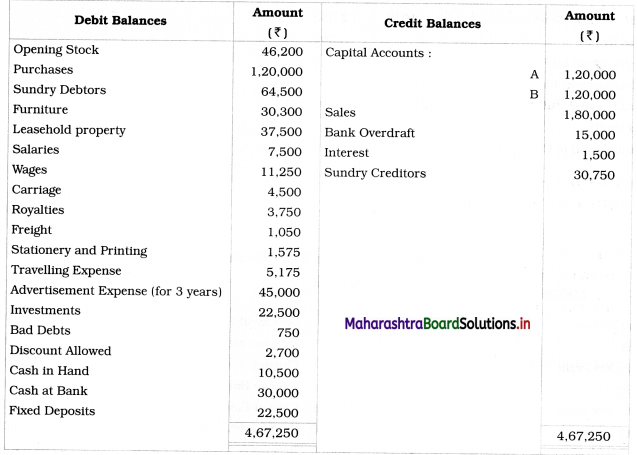
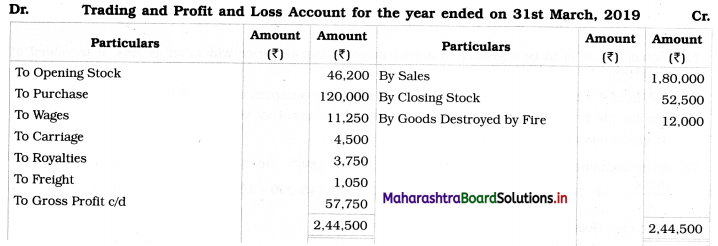
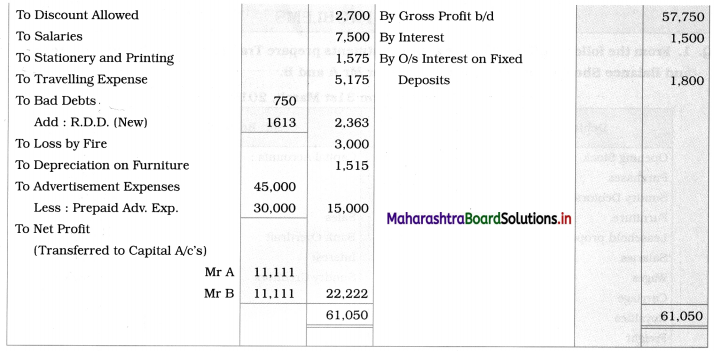
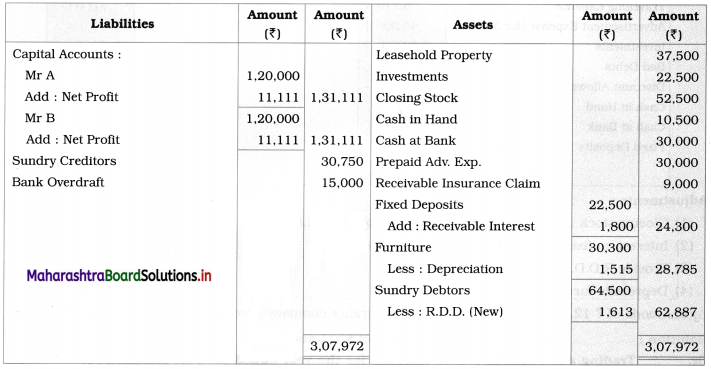

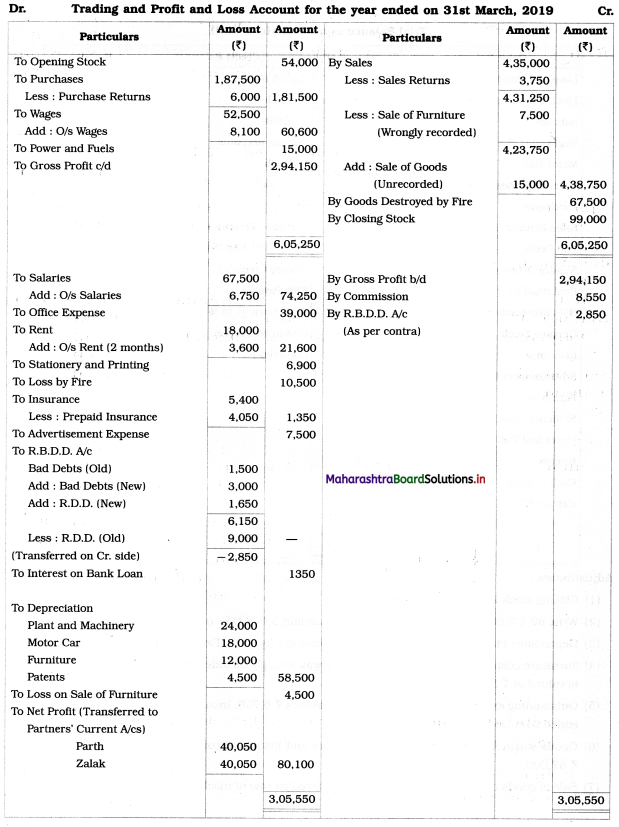

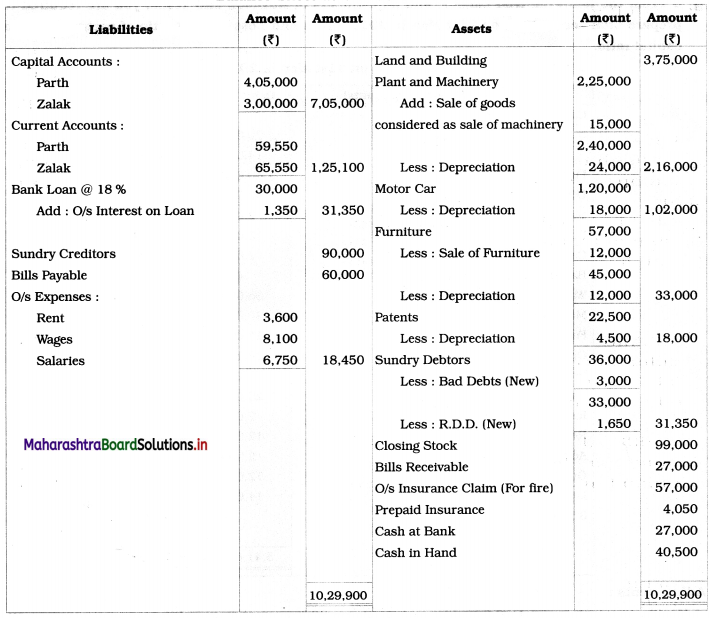
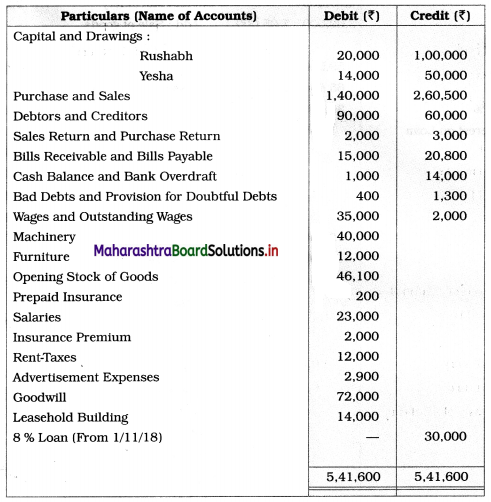
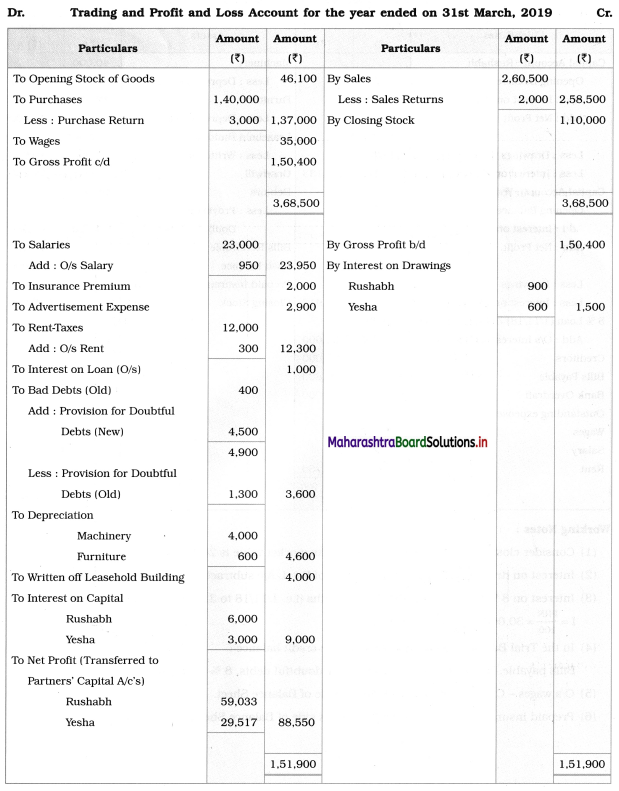
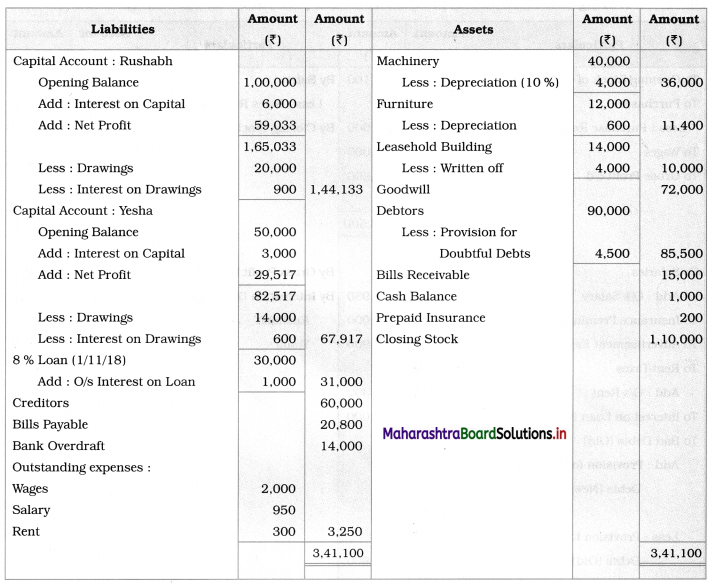
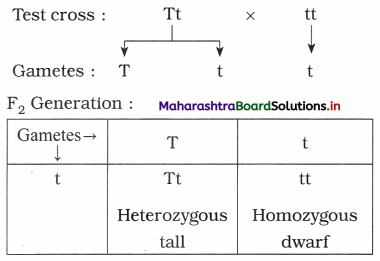
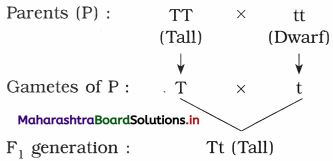
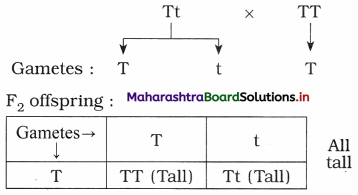
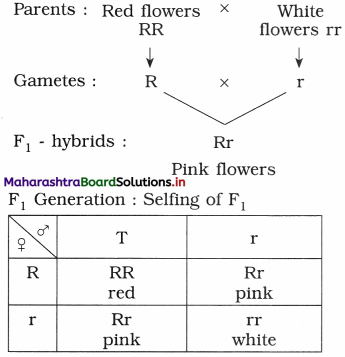

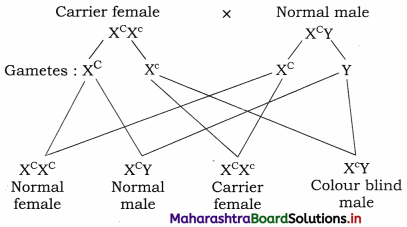
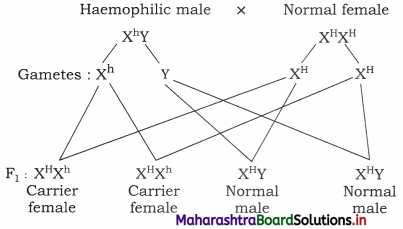
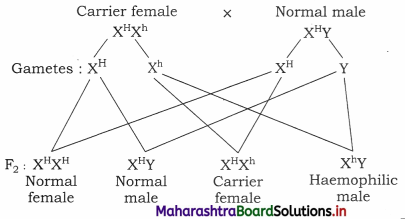
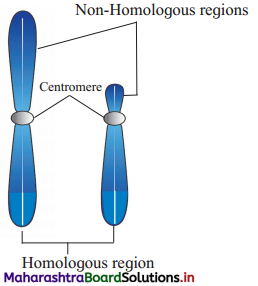

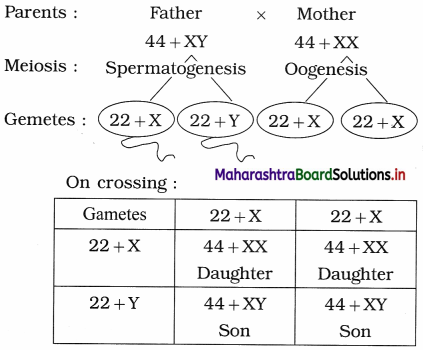
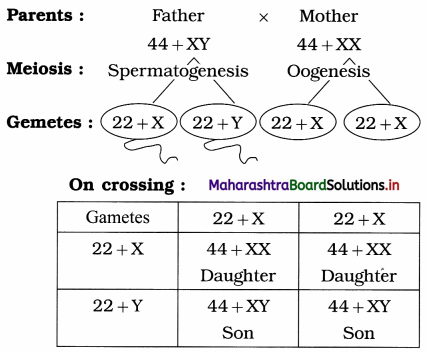
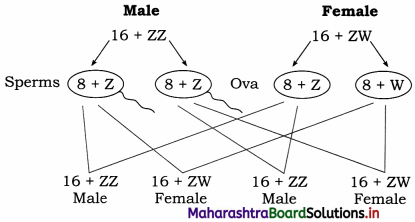




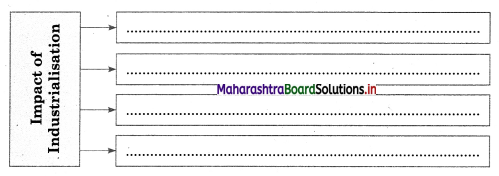
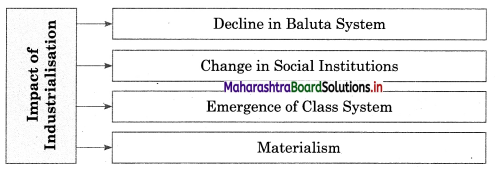



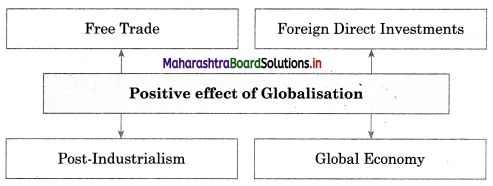

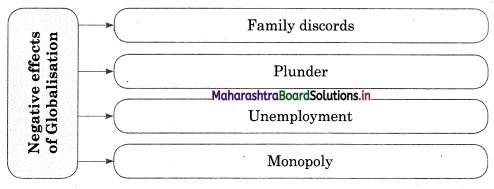

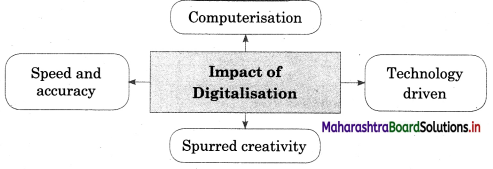










 Ring opening polymerization proceeds by addition of a single monomer unit to the growing chain molecules. It is a step growth polymerization.
Ring opening polymerization proceeds by addition of a single monomer unit to the growing chain molecules. It is a step growth polymerization.










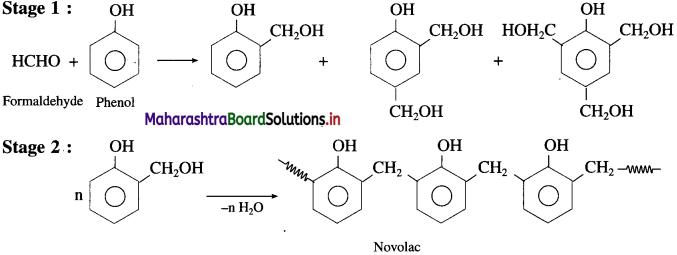
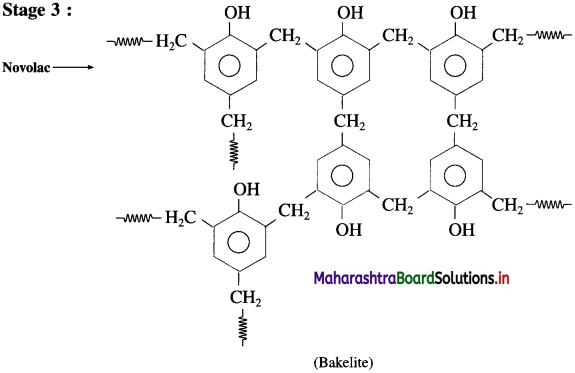




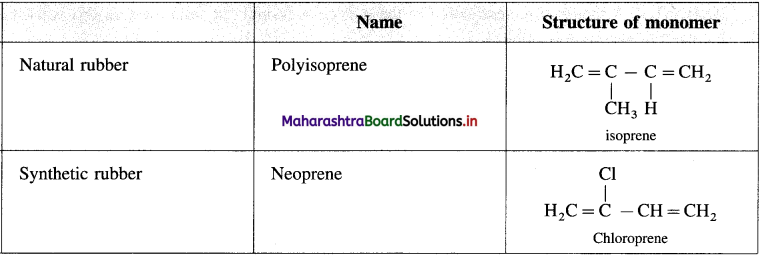
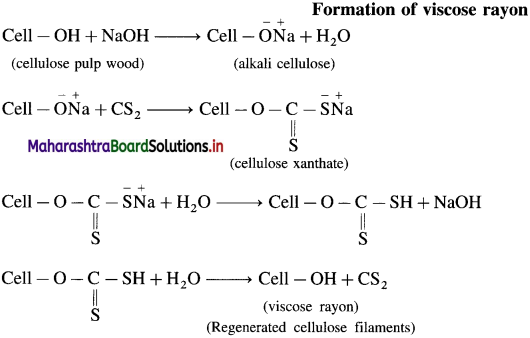

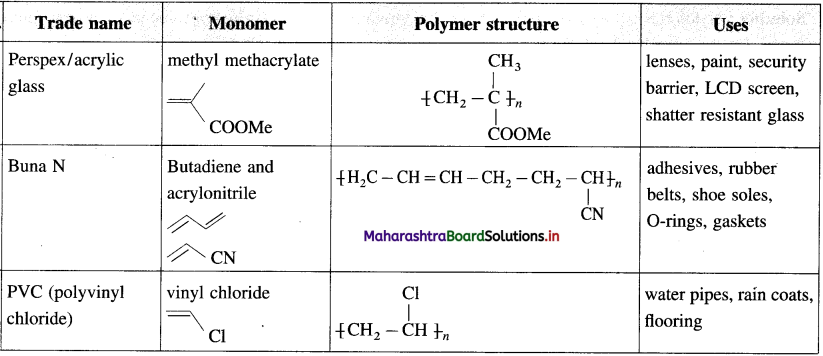











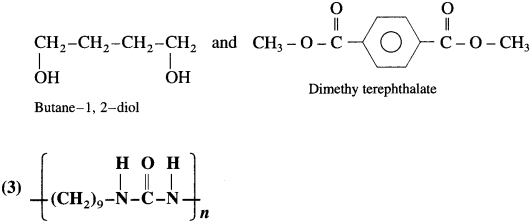


 is used in the preparation of polyester (terylene or dacron).
is used in the preparation of polyester (terylene or dacron).


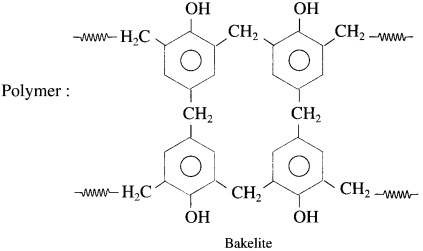








 is the formula of _ Jn
is the formula of _ Jn